Author Biographies 18
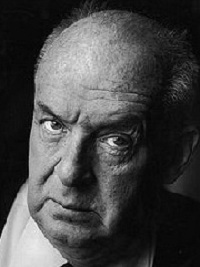 Vladimir Nabokov
Vladimir Nabokov
1899-1977
Vladimir Vladimirovich Nabokov (April 22, 1899-July 2, 1977) was a multilingual Russian novelist, poet and short story writer. Nabokov’s first nine novels were in Russian. He then rose to international prominence as a writer of English prose. He also made serious contributions as a lepidopterist and chess composer.
Nabokov’s Lolita (1955) is frequently cited as among his most important novels and is his most widely known, exhibiting the love of intricate word play and synesthetic detail that characterized all his works. Pale Fire (1962) was similarly successful. His memoir, Speak, Memory, was listed No. 8 on the Modern Library nonfiction list.
Nabokov was born in St. Petersburg to a wealthy and prominent family of the minor nobility. Nabokov’s childhood, which he called “perfect,” was remarkable in several ways. The family spoke Russian, English and French in their household, and Nabokov was trilingual from an early age. He eventually immigrated to America and became a naturalized citizen in 1940.
After the great financial success of Lolita, Nabokov was able to return to Europe and devote himself exclusively to writing. On October 1, 1961, he moved to the Montreux Palace Hotel in Montreux, Switzerland. In 1977, he was hospitalized in Lausanne, suffering from severe bronchial congestion. He died on July 2, in Montreux.
Source: http://en.wikipedia.org/wiki/Vladimir_Nabokov
 Bibliography
Bibliography
Press your browser’s BACK button to return to the previous page.
 Azar Nafisi
Azar Nafisi
1947-
Azar Nafisi (born ca. 1947) is an Iranian academic and bestselling writer who has resided in the United States since 1997, when she emigrated from Iran. Her field is English-language literature.
Nafisi’s 2003 book, Reading Lolita in Tehran: A Memoir in Books, has been translated into 32 languages. The book led to controversy about Nafisi’s alleged connections to neoconservatism and colonialism.
She published an autobiography, Things I’ve Been Silent About: Memories of a Prodigal Daughter (2008), focusing on the impact of her relations with her parents (her mother was peevish and cold, her father was affectionate and companionable) and of decades of political upheaval in Iran, including her father’s incarceration under the shah on trumped-up charges of financial irregularities.
Nafisi has been a visiting fellow and lecturer at the Foreign Policy Institute of Johns Hopkins University’s School of Advanced International Studies (SAIS) and served on the Board of Trustees of Freedom House.
Source: http://en.wikipedia.org/wiki/Azar_Nafisi
 Bibliography
Bibliography
Press your browser’s BACK button to return to the previous page.
 V.S. Naipaul
V.S. Naipaul
1932-2018
Sir Vidiadhar Surajprasad Naipaul (born August 17, 1932, in Chaguanas, Trinidad and Tobago), commonly known as V.S. Naipaul, was a British novelist and essayist of Indo-Trinidadian descent.
He was awarded numerous literary prizes, including the John Llewellyn Rhys Prize (1958), the Somerset Maugham Award (1960), the Hawthornden Prize (1964), the W.H. Smith Literary Award (1968), the Booker Prize (1971) and the David Cohen Prize for lifetime achievement in British Literature (1993). V.S. Naipaul was also awarded the Nobel Prize in Literature in 2001.
Naipaul died at his home in London on 11 August 2018.
Source: http://en.wikipedia.org/wiki/V._S._Naipaul
 Bibliography
Bibliography
Press your browser’s BACK button to return to the previous page.
 Ogden Nash
Ogden Nash
1902-1971
Frederic Ogden Nash (August 19, 1902-May 19, 1971) was an American poet well known for his light verse. At the time of his death in 1971, The New York Times said his “droll verse with its unconventional rhymes made him the country’s best-known producer of humorous poetry.”
Nash was born in Rye, New York. His father owned and operated an import-export company and, because of business obligations, the family relocated often.
After graduating from St. George’s School in Middletown, Rhode Island, Nash entered Harvard University in 1920, only to drop out a year later. He returned to St. George’s to teach for a year and left to work his way through a series of other jobs, eventually landing a position as an editor at Doubleday publishing house, where he first began to write poetry.
Nash moved to Baltimore, Maryland, three years after marrying Frances Leonard, a Baltimore native. He lived in Baltimore from 1934 until his death in 1971.
In 1931, he published his first collection of poems, Hard Lines, earning him national recognition. When Nash wasn’t writing poems, he made guest appearances on comedy and radio shows and toured the United States and England, giving lectures at colleges and universities.
Nash died of Crohn’s disease at Johns Hopkins Hospital in Baltimore on May 19, 1971. He is interred in North Hampton, New Hampshire’s East Side Cemetery. His daughter, Isabel, was married to noted photographer Fred Eberstadt, and his granddaughter, Fernanda Eberstadt, is an acclaimed author.
Source: http://en.wikipedia.org/wiki/Ogden_Nash
 Bibliography
Bibliography
Press your browser’s BACK button to return to the previous page.
 Thomas Nashe
Thomas Nashe
1567-1601
Thomas Nashe was born in Lowestoft in 1567 and educated at St. John’s College, Cambridge. After graduating in 1586, he became one of the “University Wits,” a circle of writers who came to London in the reign of Queen Elizabeth I and wrote for the stage and the press. In 1589, his preface to Robert Greene’s Menaphon was published. The preface attacked contemporary writers who plagiarized from classical authors, and it praised Spenser and Greene. The Anatomie of Absurditie, also published in 1589, satirized contemporary literature, especially romances.
Nashe took part in the Martin Marprelate controversy, answering attacks made on the Church of England by a Puritan group of writers known as Martin Marprelate. Using the pen name, “Pasquil,” Nashe may have written several satiric pamphlets, of which “An Almond for a Parrat” (1590) is the only one attributed to him with conviction.
Nashe also took part in a violent literary controversy with the poet Gabriel Harvey and his brother, Richard. Richard Harvey had been extremely critical of Nashe’s preface to Greene’s Menaphon, and Nashe retaliated in Pierce Penniless, His Supplication to the Devil (1592). The work, a prose satire, was in part an attack on the Harveys, as well as on Nashe’s opponents in the Marprelate controversy; it also protests against the public’s neglect of worthy writers. Gabriel Harvey wrote an unpleasant account of Greene’s final days in his Four Letters the same year; Nashe responded by writing “Four Letters Confuted,” defending his dead friend’s memory. The latter was published in 1593 and is also known as “Strange Newes of the Intercepting of Certain Letters.”
Nashe’s best-known work, the novel The Unfortunate Traveller, or The Life of Jack Wilton (1594), is now thought to have been the first picaresque novel in English. It is a loosely connected account of adventures real and fictional on the Continent. Important among Nashe’s other writings are: Summer’s Last Will and Testament, a masque (1600); The Terrors of the Night, an attack on demonology; and Lenten Stuff (1599).
The details surrounding Nashe’s death are uncertain. He died in 1601, aged 34, and various causes ranging from the plague to food poisoning to a stroke have been suggested.
Source: http://www.luminarium.org/renlit/nashebio.htm
 Bibliography
Bibliography
Press your browser’s BACK button to return to the previous page.
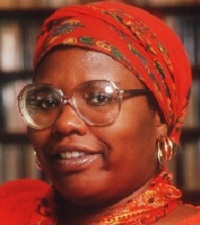 Gloria Naylor
Gloria Naylor
1950-2016
Gloria Naylor (January 25, 1950-September 28, 2016) was an African-American novelist and educator. Born in New York, she was the first child born to Roosevelt Naylor and Alberta McAlpin. As Naylor grew up, her father was a transit worker and her mother was a telephone operator. In 1963, she moved to Queens with her family.
Naylor earned her bachelor’s degree in English at Brooklyn College, after which she obtained a master’s degree in Afro-American Studies from Yale University.
Naylor’s novel, The Women of Brewster Place, was first published in 1982.
During her career as a professor, she taught writing and literature at several universities. She taught at George Washington University, New York University, Boston University and Cornell University.
Naylor died of a heart attack on September 28, 2016, while visiting St. Croix, United States Virgin Islands. She was 66.
Source: http://en.wikipedia.org/wiki/Gloria_Naylor
 Bibliography
Bibliography
Press your browser’s BACK button to return to the previous page.
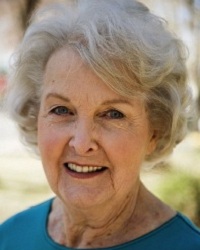 Phyllis Reynolds Naylor
Phyllis Reynolds Naylor
1933-
Phyllis Reynolds Naylor (born January 4, 1933) is an American author best known for her children’s and young-adult fiction books. Naylor is best known for her children’s-novel trilogy: Shiloh (a 1992 Newbery Medal winner), Shiloh Season and Saving Shiloh, all made into movies. She is also known for her Alice book series; The Grand Escape; the short story collection, The Galloping Goat and Other Stories; The Witch Saga; and a series of books, starting with The Boys Start the War, about boys and girls pulling pranks on each other.
Naylor was born in Anderson, Indiana, and grew up during the Great Depression. Her parents read stories to her when she was young. She began writing her own stories when she was in elementary school. She wrote short stories and articles before attempting to write a novel.
When she was 16 years old, a Sunday school teacher asked her to write a story for the church magazine. Her first story, called “Mike’s Hero,” was accepted and was published. She received $4.67 for her story. When she was 18 years old, she got married. After graduating from community college, she and her husband went to Chicago. She worked as a clinical secretary in a university hospital during that time. She also worked as a elementary school teacher and editor for a magazine.
Naylor returned to American University and tried to obtained a Bachelor of Arts degree in clinical psychology. Before going to graduate school, however, she decided to become a full-time author.
In 1960, she married Rex Naylor. Her first children’s book, called The Galloping Goat and Other Stories, was published in 1965.
Source: http://en.wikipedia.org/wiki/Phyllis_Reynolds_Naylor
 Bibliography
Bibliography
Press your browser’s BACK button to return to the previous page.
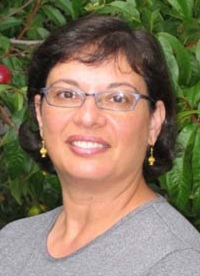 Sonia Nazario
Sonia Nazario
1960-
Sonia Nazario has written about social issues for more than two decades, most recently as a projects reporter for The Los Angeles Times. She holds the distinctions of winning the 2003 Pulitzer Prize for Feature Writing and of being the youngest writer to be hired by The Wall Street Journal.
She grew up in Kansas and in Argentina. Nazario is a graduate of Williams College and holds a master’s degree in Latin American Students from the University of California, Berkeley.
After leaving The Wall Street Journal for a second time, Nazario joined The Los Angeles Times in 1993 to write about social issues, including those dealing with Latinos and Latin America. The following year, she won a George Polk Award for Local Reporting for a series about hunger among schoolchildren in California. In 1998, Nazario was a finalist for the Pulitzer Prize for Feature Writing for her story about what life is like for the children of drug addicts.
In 2002, Nazario finished work on a multi-part story, entitled Enrique’s Journey, about the experiences of Latin American children who immigrate to join their parents in the U.S. The newspaper series won more than a dozen national journalism awards, among them the Pulitzer Prize for Feature Writing, the George Polk Award for International Reporting, the Grand Prize of the Robert F. Kennedy Journalism Award and the National Association of Hispanic Journalists Guillermo Martinez-Marquez Award for Overall Excellence.
In 2006, Nazario published a book, Enrique’s Journey, that significantly expanded her newspaper series.
Source: http://en.wikipedia.org/wiki/Sonia_Nazario
 Bibliography
Bibliography
Press your browser’s BACK button to return to the previous page.
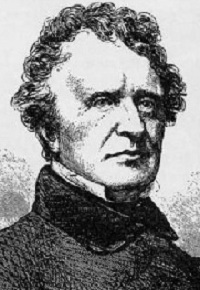 John Neal
John Neal
1793-1876
John Neal (August 25, 1793-June 20, 1876) was most notably an author and art/literary critic. He was also a man of diverse talents and objectives, many of which were pioneering in his day. For example, he is credited as being the first American author to employ colloquialism in his writing, breaking with more formal traditions in literature. However, he was also undisciplined and often rambling so, despite its period significance, his literary work has drifted into obscurity. He was also an early women’s rights advocate, prohibitionist, temperance advocate, opponent of dueling, accomplished lawyer, boxer and architect.
Born in a yellow frame house on Free Street at the corner of South Street in Falmouth (now Portland, Maine) of Quaker parents, he attended school until the age of 12, whereupon he entered into business. For nine years he made a living as haberdasher, clerk, dry goods dealer, traveling penmanship tutor and miniature artist, among other things, before entering law school in Baltimore, Maryland, in 1815. Neal supported himself while in school by writing for local periodicals and he helped found a literary society, The Delphian Club. Neal wrote for and eventually edited the journal the Delphians created – a short-lived but influential and admired monthly journal, The Portico. He turned to novels and poetry, publishing some six novels and two epic poems (under the pseudonymous “clubicular” name, “Jehu O’Cataract,” a nickname given to him by the Delphians because of his rapid production). He was proud of the speed with which he produced his volumes, often taking only a week to finish an entire novel. He wrote during this stage in his life that, “I shall write, as others drink, for exhilaration.” Neal left for England in late 1823.
Neal’s time in London (1824-1827) was a mission: To win recognition in Europe of American literature and demystify the land of his birth in the eyes of the British literary elite. He attempted to fulfill this mission through his work for Blackwood’s Magazine and by writing one novel that was published in England: Brother Jonathan, or the New Englanders. He wrote in his column for Blackwood’s about American life and critiqued American authors. After a falling out with the editor of Blackwood’s, Neal wrote for several other leading periodicals, including The Westminster Review. As part of a debating society, he met Jeremy Bentham, who invited Neal to live with him in London. After a short trip to Paris, Neal returned to Portland, Maine.
When he returned to Portland in 1827, he was rather ill-received, as some of his writing, perhaps Errata (1823) or “Keep Cool” (1817), a kiss-and-tell story about his experiences in Portland as a youngster, was found offensive by many locals. Unknown to his denouncers, his return to Portland was planned as merely a visit but, faced with such opposition, he decided to stay. In his autobiography, Wandering Recollections of a Somewhat Busy Life, he wrote, “‘Verily, verily,’ said I, ‘if they take that position, here I will stay, till I am both rooted and grounded – grounded in the graveyard, if nowhere else.’” Indeed, he spent the rest of his life in Portland, re-establishing his law practice and a short-lived literary periodical called The Yankee.
He guided many an author or artist through critique and encouragement, among them Edgar Allan Poe, Benjamin Paul Akers and Charles Codman. In addition to his literary work, Neal also helped found several gymnasiums in Portland and throughout the state of Maine. He is often referred to as “The Father of Organized Maine Athletics.” He maintained a solid physique into old age, which he demonstrated when, at 79, he threw a stubborn cigar-smoker off a nonsmoking street car.
Source: http://en.wikipedia.org/wiki/John_Neal
 Bibliography
Bibliography
Press your browser’s BACK button to return to the previous page.
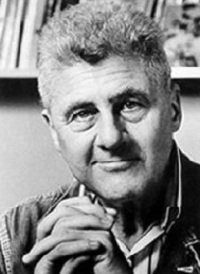 Howard Nemerov
Howard Nemerov
1920-1991
Howard Nemerov (February 29, 1920-July 5, 1991) was an American poet. Born on leap day in New York City, his parents were David and Gertrude Nemerov. Young Howard was raised in a sophisticated New York City environment, where he attended the Society for Ethical Culture’s Fieldston School. Graduating in 1937 as an outstanding student and second-string team football fullback, he commenced studies at Harvard University where, in 1940, he received his bachelor’s degree and was Bowdoin Essayist. Throughout World War II, he served as a pilot, first in the Royal Canadian Air Force and later in the U.S. Army Air Force. He married in 1944 and, after the war, having earned the rank of first lieutenant, returned to New York with his wife to complete his first book.
Nemerov then began teaching, first at Hamilton College and later at Bennington College, Brandeis University and, finally, Washington University in St. Louis, where he was Edward Mallinckrodt Distinguished University Professor of English and Distinguished Poet in Residence from 1969 until his death in 1991. Nemerov’s numerous collections of poetry include: Trying Conclusions: New and Selected Poems, 1961-1991 (1991); The Collected Poems of Howard Nemerov (1977), which won the Pulitzer Prize, the National Book Award and the Bollingen Prize; The Winter Lightning: Selected Poems (1968); Mirrors and Windows (1958); The Salt Garden (1955); and The Image of the Law (1947). His novels have also been commended; they include: The Homecoming Game (1957), Federigo, or the Power of Love (1954) and The Melodramatists (1949).
Nemerov served as poetry consultant to the Library of Congress in 1963 and 1964, as a Chancellor of the Academy of American Poets beginning in 1976, then two terms as poet laureate of the United States from 1988 to 1990. In 1990, he was inducted into the St. Louis Walk of Fame.
Nemerov died of cancer in 1991 in University City, Missouri.
Source: http://en.wikipedia.org/wiki/Howard_Nemerov
 Bibliography
Bibliography
Press your browser’s BACK button to return to the previous page.
 Cornelius Nepos
Cornelius Nepos
c. 100 BC-c. 25 BC
Cornelius Nepos (c. 100 BC-c. 25 BC) was a Roman biographer. He was born at Hostilia, a village in Cisalpine Gaul not far from Verona. His Gallic origin is attested by Ausonius; Pliny the Elder calls him “Padi accola” (“a dweller on the River Po”). He was a friend of Cicero, Titus Pomponius Atticus and Catullus, who dedicates his poems to him. Eusebius places him in the fourth year of the reign of Augustus, which is supposed to be when he began to attract critical acclaim by his writing. Pliny the Elder notes he died in the reign of Augustus (Natural History IX.39, X.23).
His only surviving work is the Excellentium Imperatorum Vitae, which appeared in the reign of Theodosius I as the work of the grammarian Aemilius Probus, who presented it to the emperor with a dedication in Latin verse. He claims it to have been the work of his mother or father (the manuscripts vary) and his grandfather. Despite the obvious questions (such as why is the preface addressed to someone named Atticus when the work was supposedly dedicated to Theodosius), no one seemed to have doubted Probus’ authorship.
Eventually, Peter Cornerus discovered in a manuscript of Cicero’s letters the biographies of Cato and Atticus. He added them to the other existing biographies, despite the fact that the writer speaks of himself as a contemporary and friend of Atticus, and that the manuscript bore the heading E libro posteriore Cornelii Nepotis (“From the last book of Cornelius Nepos”).
At last, Dionysius Lambinus’ edition of 1569 bore a commentary demonstrating on stylistic grounds that the work must have been of Nepos alone, and not Aemilius Probus. This view has been tempered by more recent scholarship, which agrees with Lambinus that they are the work of Nepos but that Probus probably abridged the biographies when he added the verse dedication. The Life of Atticus, however, is considered to be the exclusive composition of Nepos.
Source: http://en.wikipedia.org/wiki/Cornelius_Nepos
 Bibliography
Bibliography
Press your browser’s BACK button to return to the previous page.
 John Henry (Cardinal) Newman
John Henry (Cardinal) Newman
1801-1890
John Henry Newman (February 21, 1801-August 11, 1890), also referred to as Cardinal Newman and Blessed John Henry Newman, was an important figure in the religious history of England in the 19th century.
Originally an evangelical Oxford academic and priest in the Church of England, Newman was a leader in the Oxford Movement. This influential grouping of Anglicans wished to return the Church of England to many Catholic beliefs and forms of worship traditional in the Medieval times to restore ritual expression. In 1845, Newman left the Church of England and was received into the Roman Catholic Church, where he was eventually granted the rank of cardinal by Pope Leo XIII. He was instrumental in the founding of the Catholic University of Ireland, which evolved into University College, Dublin, currently the largest university in Ireland.
Newman was a literary figure of note: His major writings, including his autobiography, Apologia Pro Vita Sua (1865-66), The Grammar of Assent (1870) and the poem, “The Dream of Gerontius” (1865), which was set to music in 1900 by Edward Elgar as an oratorio. He also wrote the popular hymns, “Lead, Kindly Light” and “Praise to the Holiest in the Height” (taken from Gerontius).
From the latter half of 1886, Newman’s health began to fail and he celebrated Mass for the last time on Christmas Day in 1889. On August 11, 1890, he died of pneumonia at the Birmingham Oratory.
Newman’s beatification was officially proclaimed by Pope Benedict XVI on September 19, 2010, during his visit to the United Kingdom. His canonization is dependent on the documentation of additional miracles.
Source: http://en.wikipedia.org/wiki/John_Henry_Newman
 Bibliography
Bibliography
Press your browser’s BACK button to return to the previous page.
 Sir Isaac Newton
Sir Isaac Newton
1642-1727
Sir Isaac Newton (December 25, 1642-March 20, 1727) was an English physicist, mathematician, astronomer, natural philosopher, alchemist and theologian who has been “considered by many to be the greatest and most influential scientist who ever lived.” His monograph, Philosophiae Naturalis Principia Mathematica, published in 1687, lays the foundations for most of classical mechanics. In this work, Newton described universal gravitation and the three laws of motion, which dominated the scientific view of the physical universe for the next three centuries. Newton showed that the motions of objects on Earth and of celestial bodies are governed by the same set of natural laws, by demonstrating the consistency between Kepler’s laws of planetary motion and his theory of gravitation, thus removing the last doubts about heliocentrism and advancing the Scientific Revolution.
The Principia is generally considered to be one of the most important scientific books ever written, due, independently, to the specific physical laws the work successfully described and for the style of the work, which assisted in setting standards for scientific publication down to the present time. Newton built the first practical reflecting telescope and developed a theory of color based on the observation that a prism decomposes white light into the many colors that form the visible spectrum. He also formulated an empirical law of cooling and studied the speed of sound.
In mathematics, Newton shares the credit with Gottfried Leibniz for the development of differential and integral calculus. He also demonstrated the generalized binomial theorem, developed a method for approximating the roots of a function, and contributed to the study of power series. Newton was also highly religious. He was an unorthodox Christian and wrote more on Biblical hermeneutics and occult studies than on science and mathematics, the subjects he is mainly associated with. Newton secretly rejected Trinitarianism, fearing to be accused of refusing holy orders.
Newton died in his sleep in London on March 20, 1727, and was buried in Westminster Abbey.
Source: http://en.wikipedia.org/wiki/Isaac_Newton
 Bibliography
Bibliography
Press your browser’s BACK button to return to the previous page.
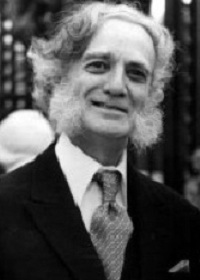 Norman Nicholson
Norman Nicholson
1914-1987
Norman Cornthwaite Nicholson (1914-1987), poet, dramatist, novelist, critic, biographer and topographer, was born behind the gentleman’s outfitters shop run by his father in Millom, Cumbria. He was to live all his life in this small mining town. In 1930, at the age of 16, he was diagnosed with pulmonary tuberculosis and sent to a sanatorium in Linford in Hampshire. On his return, he was unable to work and developed a love of native wild flowers and birds. The ideas he developed at this time formed the basis of Nicholson’s philosophy and much of the poetry and prose writing he produced during his life.
During the 1930s, he published anonymous reviews for The Times Literary Supplement and, from 1938 onward, he lectured on modern literature to the local WEA in Millom, Whitehaven and St. Bees. His first published collection of poems about Cumbria, the war and religion, entitled Five Rivers (1944), won the first Heinmann Prize for Poetry. His second collection, Rock Face (1948), had similar themes. His first play, Old Man of the Mountains (1945), is the story of Elijah transported to modern Cumberland. This play carries a warning against the exploitation of the earth’s resources and consequent damage to the environment; it was produced at London’s Mercury Theatre. Other dramas include: Prophesy to the Wind (1947), A Match for the Devil (1955) and Birth by Drowning (1960).
In 1975, he produced his autobiography, Wednesday Early Closing. In 1984, he appeared on The South Bank Show, which brought his work to a much wider audience and elicited many enthusiastic responses. As well as the Heinmann Prize for Poetry, Nicholson was also awarded the Cholmondeley Award for Poetry (1967), the Queen’s Gold Medal for Poetry (1977) and the Order of the British Empire (1981). In addition, he received honorary degrees from various universities.
Norman Nicholson died on May 30, 1987, aged 73, in the house where he was born.
Source: http://www.archiveshub.ac.uk/news/03020403.html
 Bibliography
Bibliography
Press your browser’s BACK button to return to the previous page.
 Lorine Niedecker
Lorine Niedecker
1903-1970
Lorine Faith Niedecker (May 12, 1903-December 31, 1970) was a Wisconsin poet and the only woman associated with the Objectivist poets. She is widely credited for demonstrating how an Objectivist poet could handle the personal as subject matter.
Niedecker was born on Black Hawk Island near Fort Atkinson, Wisconsin, to Theresa (Daisy) Kunz and Henry Niedecker and lived most of her life in rural isolation. She grew up surrounded by the sights and sounds of the river until she moved to Fort Atkinson to attend school. This world of birds, trees, water and marsh was to inform her poetry for the rest of her life. On graduating from high school in 1922, she went to Beloit College to study literature but left after two years because her father was no longer able to pay her tuition. She devoted herself to caring for her ailing deaf mother, who was deeply depressed by her husband’s flagrant affair with a neighbor woman.
Niedecker’s earliest poetry was marked by her reading of the Imagists, whose work she greatly admired, and of surrealism. In 1931, she read the “Objectivist” issue of Poetry. She was fascinated by what she saw and immediately wrote to Louis Zukofsky, who had edited the issue, sending him her latest poems. Zukofsky suggested sending them to Poetry, where they were accepted for publication. Suddenly, Niedecker found herself in direct contact with the American poetic avant-garde.
From the mid-1930s, Niedecker moved away from surrealism and started writing poems that engaged more directly with social and political realities and on her own immediate rural surroundings. Her first book, New Goose (1946), collected many of these poems. In 1949, she began work on a poem sequence, “For Paul,” but did not publish another book for 15 years.
The 1960s saw a revival of interest in Niedecker’s work. Wild Hawthorn Press and Fulcrum Press, both British-based, published her books and her works were regularly published in magazines. Encouraged by this interest, Niedecker started writing again. She had previously earned her living scrubbing hospital floors in Fort Atkinson, proofreading at a local magazine, renting cottages and living in near-poverty for years.
Her books published in the last few decades of her life included: My Friend Tree; T&G: The Collected Poems, 1936-1966; North Central; and My Life by Water.
Niedecker died in 1970 from a cerebral hemorrhage.
Source: http://en.wikipedia.org/wiki/Lorine_Niedecker
 Bibliography
Bibliography
Press your browser’s BACK button to return to the previous page.
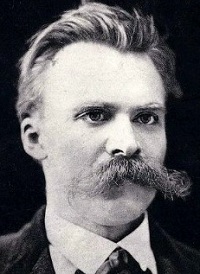 Friedrich Nietzsche
Friedrich Nietzsche
1844-1900
Friedrich Wilhelm Nietzsche (October 15, 1844-August 25, 1900) was a 19th century German philosopher, poet, composer and classical philologist. He wrote critical texts on religion, morality, contemporary culture, philosophy and science, displaying a fondness for metaphor, irony and aphorism.
Nietzsche’s influence remains substantial within and beyond philosophy, notably in existentialism, nihilism and postmodernism. His style and radical questioning of the value and objectivity of truth have resulted in much commentary and interpretation, mostly in the continental tradition. His key ideas include the death of God, perspectivism, the Ubermensch, amor fati, the eternal recurrence and the will to power. Central to his philosophy is the idea of “life-affirmation,” which involves an honest questioning of all doctrines that drain life’s expansive energies, however socially prevalent those views might be.
Nietzsche began his career as a classical philologist before turning to philosophy. In 1869, at the age of 24, he was appointed to the Chair of Classical Philology at the University of Basel (the youngest individual to have held this position) but resigned in the summer of 1879 due to health problems that plagued him most of his life.
In 1889, he became mentally ill with what was then characterized as atypical general paresis attributed to tertiary syphilis, a diagnosis that has since come into question. He lived his remaining years in the care of his mother until her death in 1897, then under the care of his sister until his death in 1900.
Source: http://en.wikipedia.org/wiki/Friedrich_Nietzsche
 Bibliography
Bibliography
Press your browser’s BACK button to return to the previous page.
 Bao Ninh
Bao Ninh
1952-
Bao Ninh (born on October 18, 1952) is a Vietnamese novelist and short story writer. His real name is Hoang Au Phuong and he was born in Nghe An province, Vietnam. During the Vietnam War, he served in the Glorious 27th Youth Brigade. Of the 500 who went to war with the brigade in 1969, he is one of only 10 who survived.
The Sorrow of War is a work of literature that in the English version laid the international foundation of the new wave of post-war Vietnamese authors, most of whom have found safe haven outside Vietnam, although Ninh has preferred to remain in Vietnam. Bao Ninh is now a successful essayist, though his early work as a short story writer focused primarily on stories about the Vietnam War.
Ninh shot into the local prominence in Hanoi with his debut novel, Than phan cua tinh yeu (The Destiny of Love), published in roneo form (similar to photocopying) in Hanoi before 1990.
The English version was published in 1994. The UK Independent newspaper judged Sorrow of War the Best Foreign Book of 1994, with all prize money equally shared by the author, Ninh, the first translator Phan Thanh Hao and the author of the final English Version, Frank Palmos. The book received immediate acclaim worldwide.
Source: http://en.wikipedia.org/wiki/Bao_Ninh
 Bibliography
Bibliography
Press your browser’s BACK button to return to the previous page.
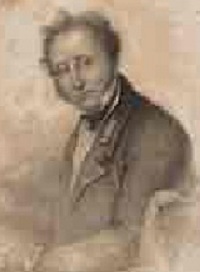 Mordecai Noah
Mordecai Noah
1785-1851
Mordecai Manuel Noah was the most influential Jew in the United States in the early 19th century. He was an editor, journalist, playwright, politician, lawyer, court of appeals judge, New York Port surveyor, a major in the New York military and, foremost, an ardent utopian Zionist.
Noah was born July 19, 1785, in Philadelphia of Portuguese-Jewish ancestry. His father, Manuel M. Noah, served with General Marion in the Revolutionary War and contributed a considerable sum of money to the cause. When Noah was 10, his mother died and he went to live with his maternal grandfather. He stayed with that family until he became old enough to go to Charleston, South Carolina, where he studied law and he became involved in politics.
He was an ardent patriot and, at the age of 26, he wrote forceful editorials in a Charleston newspaper advocating war with England. As a result of his editorials, he was appointed the U.S. Consul to Tunis. In 1815, he returned and settled in New York to engage in journalism and politics. He published The National Advocate and edited several other newspapers.
Noah broke off his relationship with the powerful political machine of the Tammany Society and opposed them by publishing The New York Enquirer from 1826 to 1829. He was a prolific playwright, which reflected his patriotic fervor. He wrote Fortress of Sorrento (1808), She Would Be a Soldier (1819) and Siege of Tripoli (1820), which was produced many times under different titles.
Noah supported education and medical care. He was a founder of New York University and he projected the idea of a Jewish hospital – Mt. Sinai – which was to come into being after his death. In 1825, Noah helped purchase a tract of land on Grand Island on the Niagara River near Buffalo, where he envisioned a Jewish colony to be called Ararat. This project elicited interest and discussion but turned into a failure. After this disappointment, he realized that Palestine was the only answer for a homeland for Jews. He lectured and wrote on the need for such a homeland, expressing ideas that preceded those of Leo Pinsker and Theodor Herzl. Noah was very active and supportive of the congregations of Mikveh Israel in Philadelphia and Shearith Israel in New York. He was the best-known Jew in America when he died of a stroke in 1851.
Source: http://www.jewishvirtuallibrary.org/jsource/biography/MNoah.html
 Bibliography
Bibliography
Press your browser’s BACK button to return to the previous page.
 Frank Norris
Frank Norris
1870-1902
Benjamin Franklin Norris Jr. (March 5, 1870-October 25, 1902) was an American novelist during the Progressive Era, writing predominantly in the naturalist genre. His notable works include McTeague (1899), The Octopus: A Story of California (1901) and The Pit (1903).
Norris was born in Chicago, Illinois, in 1870. His father, Benjamin, was a self-made Chicago businessman and his mother, Gertrude Glorvina Doggett, had a stage career. In 1884, the family moved to San Francisco, where Benjamin went into real estate. In 1887, after the death of his brother and a brief stay in London, Norris went to Academie Julian in Paris, where he studied painting for two years and was exposed to the naturalist novels of Emile Zola. Between 1890 and 1894, he attended the University of California at Berkeley, where he was influenced by the works of Darwin and Spencer. His stories appeared in the undergraduate magazine at Berkeley and in The San Francisco Wave.
After his parents’ divorce, he went east and spent a year in the English Department of Harvard University. There, he came under the influence of Lewis E. Gates, who encouraged his writing. He worked as a news correspondent in South Africa in 1895-96 and then an editorial assistant on The San Francisco Wave (1896-97). He worked for McClure’s Magazine as a war correspondent in Cuba during the Spanish-American War in 1898, then joined the New York City publishing firm of Doubleday & Page in 1899.
During his time at the University of California, Berkeley, Norris was a brother in the Fraternity of Phi Gamma Delta and was an originator of the Skull & Keys society. Because of his involvement with a prank during the Class Day Exercises in 1893, the annual alumni dinner held by each Phi Gamma Delta chapter still bears his name.
In 1900, Norris married Jeanette Black. They had a child in 1901. Norris died on October 25, 1902 of peritonitis from a ruptured appendix in San Francisco. This left The Epic of Wheat trilogy unfinished. He was only 32. He is buried in Mountain View Cemetery in Oakland, California.
Source: http://en.wikipedia.org/wiki/Frank_Norris
 Bibliography
Bibliography
Press your browser’s BACK button to return to the previous page.
 Julian of Norwich
Julian of Norwich
1343-1417
Julian of Norwich (1343-1417) lived in England during years of wars with France and Scotland. Surrounded by the suffering caused by the famine, social upheaval and extreme poverty of the middle and lower classes, she was also deeply affected by the violent and sudden deaths caused by bubonic plague.
Of humble birth, Julian was probably educated at a Benedictine convent. It is clear from her writings that she had a thorough knowledge of Scripture and the teachings of the church. Julian shared John Wycliffe’s determination to expose all people to religion and Christian teaching through the use of vernacular English, so she wrote in English. Her agreement with Wycliffe’s criticism of the lifestyles of bishops and the church’s worldliness undoubtedly influenced her own sense of spiritual calling.
Julian was deeply devout and became an anchoress, a lifetime commitment to a solitary religious life spent in a room (or rooms to allow for a servant or two) called an anchorhold. The anchorhold was built alongside one wall of a church and had one small window into the sanctuary to allow the anchoress to follow the daily service; another window to a small parlor with a door allowed people to enter from outside. People would line up, coming in one by one to ask for prayers, spiritual advice and insight into Scripture. A church with an anchorhold installed by its sanctuary gained prestige and sometimes wealth because funds were often left by grateful supplicants.
At about 30 years of age, Julian fell seriously ill and endured great physical suffering. She experienced miraculous healing and visions of Jesus, which she wrote about in her book, Revelations of Divine Love. Her writings reflect 20 years of meditation on her experience and wisdom gained from 16 “shewings” (showings) granted her by God.
As a mystic and theologian, Julian interwove the authority of Scripture with creeds and experience in the natural world. All were received as mysteries to be revealed by God. She used the devices of metaphor and allegory to communicate the deep, sometimes inexpressible meanings that are experienced in a life devoted to an intensely focused and personal relationship with God.
Source: http://gbgm-umc.org/umw/bible/mawomen.stm
 Bibliography
Bibliography
Press your browser’s BACK button to return to the previous page.
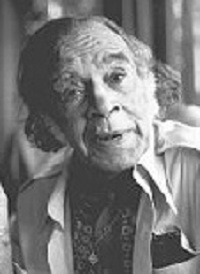 Richard Bruce Nugent
Richard Bruce Nugent
1906-1987
Richard Bruce Nugent (July 2, 1906-May 27, 1987), also known as Richard Bruce and Bruce Nugent, was a writer and painter in the Harlem Renaissance. He was born in Washington, D.C., to a middle-class, African-American family. He was the oldest child of Richard H. Nugent Jr., a train porter, and his wife, Pauline. Spending a large part of his life in New York City, he died in Hoboken, New Jersey.
In 1926, Nugent published “Smoke, Lilies, and Jade,” a short story regarded by many scholars as the first publication by an African-American to depict homosexuality openly. The story, on which he collaborated with other authors, appeared in the only issue of the art magazine Fire!! From 1926 to 1928, he lived with the writer Wallace Thurman at 267 W 136th Street in Harlem, New York. The apartment complex in which they stayed was known as “Niggeratti Manor” and the walls were decorated by Nugent with murals representing homoerotic scenes.
Many of his illustrations were featured in publications such as, Fire!! Opportunity and Palms. Four of Nugent’s works were also included in the Harmon Foundation’s exhibition of Negro artist, which was one of the few venues available for black artists to show their work in 1931.
Nugent’s only stand-alone publication, Beyond Where the Stars Stood Still, was issued in a limited edition by Warren Marr II in 1945. He later married Marr’s sister, Grace, on December 5, 1952. This marriage, however, was never consummated because Nugent was openly gay, but she insisted they marry with the notion that she could change him.
Nugent attended the Community Planning Conference at Columbia University in 1964 as an invited speaker. The conference was conducted under the auspices of the Borough President of Manhattan/Community Planning Board 10 and Columbia. The idea of forming an organization to promote the arts in Harlem emerged from the conference’s Cultural Planning workshop and led to the formation of the Harlem Cultural Council. Nugent took an active role in this effort and attended numerous subsequent meetings. Nugent was elected co-chair of this council. He also served as chair of the Program Committee until March 1967.
In 2002, Duke University Press released Gay Rebel of the Harlem Renaissance: Selections from the Work of Richard Bruce Nugent, which included examples of his writing and artwork.
Source: http://en.wikipedia.org/wiki/Richard_Bruce_Nugent
 Bibliography
Bibliography
Press your browser’s BACK button to return to the previous page.
 Tim O’Brien
Tim O’Brien
1946-
Tim O’Brien (born October 1, 1946) is an American novelist who often writes about the Vietnam War and the impact the war had on the American soldiers who fought there. He has held the endowed chair at the MFA program of Texas State University-San Marcos several times, from 2003 to 2004, then from 2005 to 2006 and a third time from 2008 to 2009.
O’Brien was born in Austin, Minnesota, a city of about 20,000. When O’Brien was 12, his family moved to Worthington, Minnesota. He earned his B.A. in Political Science in 1968 from Macalester College, where he was student body president. That same year, he was drafted into the U.S. Army and was sent to Vietnam, where he served from 1968 to 1970 in 3rd Platoon, Company A, 5th Battalion, 23rd Infantry Division. Upon completing his tour of duty, O’Brien went on to graduate school at Harvard University and received an internship at The Washington Post.
His writing career was launched in 1973 with the release of If I Die in a Combat Zone, Box Me Up and Ship Me Home, about his war experiences. The Things They Carried was published in 1990.
O’Brien received the National Book Award in 1979 for his book, Going after Cacciato. His novel, In the Lake of the Woods, won the James Fenimore Cooper Prize for Best Historical Fiction in 1995. His most recent novel is July, July.
O’Brien writes and lives in central Texas, where he teaches full-time every other year at Texas State University-San Marcos. In alternate years, he teaches several workshops to MFA students in the creative writing program.
Source: http://en.wikipedia.org/wiki/Tim_O%27Brien_%28author%29
 Bibliography
Bibliography
Press your browser’s BACK button to return to the previous page.
 Sean O’Casey
Sean O’Casey
1880-1964
Sean O’Casey (March 30, 1880-September 18, 1964) was an Irish dramatist and memoirist. A committed socialist, he was the first Irish playwright of note to write about the Dublin working classes.
O’Casey was born in Dublin, Ireland, to Michael and Susan Archer Casey in a house at 85 Upper Dorset Street, in the northern inner-city area of Dublin. It is commonly thought that he grew up in the working-class society in which many of his plays are set.
O’Casey’s first accepted play, The Shadow of a Gunman, was performed at the Abbey Theatre in 1923. It was followed by Juno and the Paycock (1924) and The Plough and the Stars (1926). In 1928, O’Casey’s fourth play, The Silver Tassie, was rejected by The Abbey. The plays he wrote after this included the darkly allegorical, Within the Gates (1934).
The Star Turns Red (1940) was staged by Unity Theatre in London during 1940 (later, in 1978, by The Abbey in Dublin). Purple Dust (1943) followed. O’Casey also penned Red Roses for Me (1943), which saw him move away from his early style in favor of more expressionistic means and overtly socialist content in his writing. Next was Oak Leaves and Lavender (1945).
After World War II, he wrote Cock-a-Doodle Dandy (1949). From The Bishop’s Bonfire (1955) O’Casey’s late plays are studies of the common life in Ireland, “Irish microcosmos,” as seen in The Drums of Father Ned (1958).
In September 1964, at the age of 84, O’Casey died of a heart attack in Torquay, England.
Source: http://en.wikipedia.org/wiki/Se%C3%A1n_O%27Casey
 Bibliography
Bibliography
Press your browser’s BACK button to return to the previous page.
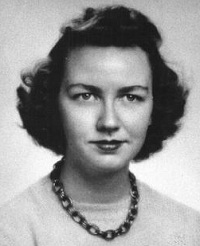 Flannery O’Connor
Flannery O’Connor
1925-1964
Mary Flannery O’Connor (March 25, 1925-August 3, 1964) was an American novelist, short story writer and essayist. An important voice in American literature, O’Connor wrote two novels and 32 short stories, as well as a number of reviews and commentaries. She was a Southern writer who often wrote in a Southern Gothic style and relied heavily on regional settings and grotesque characters. O’Connor’s writing also reflected her own Roman Catholic faith and frequently examined questions of morality and ethics.
O’Connor was born in Savannah, Georgia, the only child of Edward F. O’Connor and Regina Cline. She attended the Peabody Laboratory School, from which she graduated in 1942. She entered Georgia State College for Women (now Georgia College & State University) in an accelerated three-year program and graduated in June 1945 with a Social Sciences degree. In 1946, she was accepted into the prestigious Iowa Writers’ Workshop at the University of Iowa, where she first went to study journalism. While there, she got to know several important writers and critics who lectured or taught in the program, among them Robert Penn Warren, John Crowe Ransom, Robie Macauley, Austin Warren and Andrew Lytle. Lytle, for many years editor of The Sewanee Review, was one of the earliest admirers of O’Connor’s fiction. He later published several of her stories in The Sewanee Review, as well as critical essays on her work.
In 1951, she was diagnosed with systemic lupus erythematosus and subsequently returned to her ancestral farm, Andalusia, in Milledgeville, Georgia.
O’Connor completed more than two dozen short stories and two novels while battling lupus. She died on August 3, 1964, at the age of 39, of complications from lupus, at Baldwin County Hospital and was buried in Milledgeville, Georgia, at Memory Hill Cemetery.
Source: http://en.wikipedia.org/wiki/Flannery_O%27Connor
 Bibliography
Bibliography
Press your browser’s BACK button to return to the previous page.
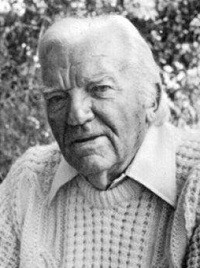 Scott O’Dell
Scott O’Dell
1898-1989
Scott O’Dell was born on May 23, 1898, in Los Angeles, California. His family moved all over southern California because his father was a railroad worker. When he was young, he loved to be outdoors and especially enjoyed playing in the water and experiencing sea life.
O’Dell attended Occidental College in 1919, the University of Wisconsin-Madison in 1920, Stanford University from 1920-21 and the University of Rome in 1925. He only took classes that helped him in his writing career and that interested him. As an adult, he had several different jobs before he became a writer. He was a cameraman for Hollywood and even worked on the film Ben Hur. He served in the Air Force during World War II and, at one time, was even a rancher.
O’Dell began writing articles and both nonfiction and fiction books for adults 1934. During the 1940s and 1950s, he worked as a book columnist for The Los Angeles Mirror and as a book editor for The Los Angeles Daily News. In the late 1950s, he began writing children’s books.
He received many awards for his work, including the Newbery Medal in 1961 for one of his best-known works, Island of the Blue Dolphins. Three of his books of historical fiction were named Newbery Honor Books: The King’s Fifth (1966), The Black Pearl (1967) and Sing Down the Moon (1970). He received the Hans Christian Anderson Award for lifetime achievement in 1972. In 1976, he received the University of Southern Mississippi Silver Medallion and the Regina Medal in 1978. In 1981, he established the Scott O’Dell Historical Fiction Award, which recognizes outstanding works of historical fiction.
Scott O’Dell died on October 15, 1989.
Source: http://library.thinkquest.org/J001156/author%20reviews/em_odell_bio.htm
 Bibliography
Bibliography
Press your browser’s BACK button to return to the previous page.
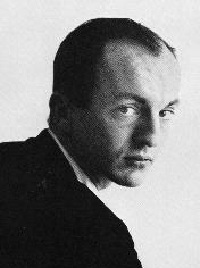 Frank O’Hara
Frank O’Hara
1926-1966
Francis Russell “Frank” O’Hara (March 27, 1926-July 25, 1966) was an American writer, poet and art critic. He was a member of the New York School of poetry.
O’Hara, the son of Russell Joseph O’Hara and Katherine (nee Broderick), was born at Maryland General Hospital, Baltimore, and grew up in Grafton, Massachusetts. He attended St. John’s High School in Worcester. He studied piano at the New England Conservatory in Boston from 1941 to 1944 and served in the South Pacific and Japan as a sonarman on the destroyer USS Nicholas during World War II.
With the funding made available to veterans, he attended Harvard University. Although O’Hara majored in music and did some composing, his attendance was irregular and his interests disparate. He regularly attended classes in philosophy and theology, while writing impulsively in his spare time. O’Hara was heavily influenced by visual art and by contemporary music, which was his first love. Despite his love of music, O’Hara changed his major and graduated from Harvard in 1950 with a degree in English.
He then attended graduate school at the University of Michigan in Ann Arbor. While at Michigan, he won a Hopwood Award and received his M.A. in English literature 1951. That autumn, O’Hara moved into an apartment in New York City. It was in New York that he began teaching at The New School. Soon after arriving in New York, he was employed at the front desk of the Museum of Modern Art and began to write seriously.
In the early morning hours of July 24, 1966, O’Hara was struck by a dune buggy on the Fire Island beach. He died the next day of a ruptured liver.
Source: http://en.wikipedia.org/wiki/Frank_O%27Hara
 Bibliography
Bibliography
Press your browser’s BACK button to return to the previous page.
 Eugene O’Neill
Eugene O’Neill
1888-1953
Eugene Gladstone O’Neill (October 16, 1888-November 27, 1953) was an American playwright and Nobel Laureate in Literature. His plays were among the first to include speeches in American vernacular and to involve characters on the fringes of society.
O’Neill was born in a Broadway hotel room in Longacre Square (now Times Square) in the Barrett Hotel. He was the son of Irish immigrant actor, James O’Neill, and Mary Ellen Quinlan. Because of his father’s profession, O’Neill was sent to a Catholic boarding school, where he found his only solace in books. After being suspended from Princeton University, he spent several years at sea, during which he suffered from depression and alcoholism. After his experience in 1912-13 at a sanatorium where he was recovering from tuberculosis, he decided to devote himself full-time to writing plays. O’Neill had previously been employed by The New London Telegraph, writing poetry as well as reporting.
O’Neill’s first published play, Beyond the Horizon, opened on Broadway in 1920 to great acclaim and was awarded the Pulitzer Prize for Drama. His first major hit was The Emperor Jones, which ran on Broadway in 1920. His best-known plays include: Anna Christie (Pulitzer Prize 1922), Desire under the Elms (1924), Strange Interlude (Pulitzer Prize 1928), Mourning Becomes Electra (1931) and his only well-known comedy, Ah, Wilderness! After a 10-year pause, O’Neill’s now-renowned play, The Iceman Cometh, was produced in 1946. The following year’s A Moon for the Misbegotten failed and did not gain recognition as being among his best works until decades later.
He was also part of the modern movement to revive the classical heroic mask from ancient Greek theatre and Japanese Noh theatre in some of his plays, such as The Great God Brown and Lazarus Laughed.
O’Neill died in Room 401 of the Sheraton Hotel on Bay State Road, in Boston, on November 27, 1953, at the age of 65.
Source: http://en.wikipedia.org/wiki/Eugene_O%27Neill
 Bibliography
Bibliography
Press your browser’s BACK button to return to the previous page.
 Joyce Carol Oates
Joyce Carol Oates
1938-
Joyce Carol Oates (born June 16, 1938) is an American author. Oates published her first book in 1963 and has since published more than 50 novels, as well as many volumes of short stories, poetry and nonfiction. Her novel, Them (1969), won the National Book Award, and her novels Black Water (1992), What I Lived For (1994) and Blonde (2000) were nominated for the Pulitzer Prize. As of 2008, Oates is the Roger S. Berlind ’52 Professor in the Humanities with the Program in Creative Writing at Princeton University, where she has taught since 1978.
Oates was born in Lockport, New York, to Carolina Oates, a homemaker, and Frederic Oates, a tool and die designer. Oates grew up in the working-class farming community of Millersport, New York.
Oates won a scholarship to attend Syracuse University, where she joined Phi Mu. At the age of 19, she won the “college short story” contest sponsored by Mademoiselle. Oates graduated from Syracuse University as valedictorian in 1960 and received her M.A. from the University of Wisconsin-Madison in 1961.
The Vanguard Press published Oates’ first novel, With Shuddering Fall (1964), when she was 26 years old. In 1966, she published “Where Are You Going, Where Have You Been?” a short story dedicated to Bob Dylan and written after listening to his song, “It’s All Over Now, Baby Blue.” Another noted early short story, “In a Region of Ice” (1967), dramatizes the drift into protest against the world of education and sober, established society of parents, depression and eventual murder-cum-suicide act of a young, gifted Jewish-American student. She revisited this subject in the title story of her collection, Last Days (1985).
Oates’ novel, Them (1969), received the National Book Award in 1970. Since then, she has published an average of two books a year. Frequent topics in her work include rural poverty, sexual abuse, class tensions, desire for power, female childhood and adolescence and, occasionally, the supernatural. In 1990, she published her novel, Because It Is Bitter, and Because It Is My Heart.
In 1996, Oates published We Were the Mulvaneys, a novel following the disintegration of an American family. In the 1990s and early 2000s, Oates wrote several books, mostly mystery novels, under the pen names “Rosamond Smith” and “Lauren Kelly.”
Source: http://en.wikipedia.org/wiki/Joyce_Carol_Oates
 Bibliography
Bibliography
Press your browser’s BACK button to return to the previous page.
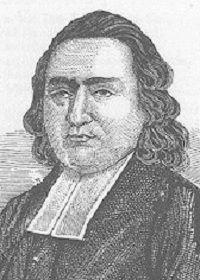 Samson Occom
Samson Occom
1723-1792
The Reverend Samson Occom (also misspelled as Occum, 1723-1792) was a Native American Presbyterian clergyman and a member of the Mohegan nation near New London, Connecticut. He has the distinction of being the first Native American person to ever publish documents and pamphlets in English.
Born to Joshua Tomacham and his wife, Occom is believed to be a direct descendant of the famous Mohegan chief, Uncas. In 1743, at the age of 16, Occom was exposed to the teachings of Christian evangelical preachers in the Great Awakening. He began to study theology at the “Lattin School” of Eleazar Wheelock in 1743 and stayed for four years until leaving to begin his own career.
Occom served as a missionary to Native American people in New England and Montauk, Long Island, where he married a local woman. It was also on Long Island where he was officially ordained a minister on August 30, 1759, by the presbytery of Suffolk. Although promised otherwise by the church leaders, Occom was never paid the same salary as white preachers and he lived in deep poverty for much of his life.
When Wheelock established an Indian charity school with a benefaction from Joshua Moor in 1754, he persuaded Occom to go to England in 1766 to raise money for the school, along with the Rev. Nathaniel Whitaker. Occom preached his way across the country from February 16, 1766, to July 22, 1767. He delivered in total between 300-400 sermons, drawing large crowds wherever he went. By the end of his tour, he had raised more than 12,000 pounds for the school. King George III himself donated 200 pounds, and William Legge, Earl of Dartmouth, subscribed 50 guineas. The friendship between Occom and Wheelock dissolved when Occom learned that Wheelock had neglected to care for Occom’s wife and children while he was away. Occom also took issue with the fact that Wheelock put the funds toward establishing Dartmouth College for the education of Englishmen rather than of Native Americans.
Upon his return from England, Occom lived at Mohegan and then moved in 1786 with some New England and Long Island Indians to Oneida territory in what is known today as New York. He then helped to found Brothertown and lived among the Brothertown Indians. Later, Stockbridge (Mohicans) people moved to the area. In 1768, Occom wrote the 10-page, “A Short Narrative of My Life,” which was kept in Dartmouth College’s archive collection until publication in 1982. He also published “Sermon at the Execution of Moses Paul” and A Choice Collection of Hymns and Spiritual Songs in 1774.
Occom died on July 14, 1792, in New Stockbridge, New York. He is buried just off of Bogusville Hill Road outside of Deansboro, New York (formerly known as Brothertown).
Source: http://en.wikipedia.org/wiki/Samson_Occom
 Bibliography
Bibliography
Press your browser’s BACK button to return to the previous page.
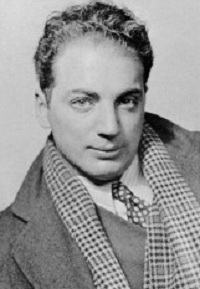 Clifford Odets
Clifford Odets
1906-1963
Clifford Odets (July 18, 1906-August 18, 1963) was an American playwright, screenwriter, socialist and social protester.
Odets was born in Philadelphia to Romanian and Russian-Jewish immigrant parents, Louis Odets (born Gorodetsky) and Esther Geisinger, and raised in Philadelphia and the Bronx, New York. He dropped out of high school to pursue acting.
Odets pursued acting with great passion. He worked consistently at The Theatre Guild. In late 1932, Odets’ first play to be produced was the one-act, Waiting for Lefty. In 1938, Odets wrote Rocket to the Moon, a play about a guilt-ridden dentist.
Odets moved to Hollywood to begin writing for the screen as well as the stage. His play, The Flowering Peach, was the preferred choice of the Pulitzer Prize jury in 1955 but, under pressure from Joseph Pulitzer Jr., the prize went instead to Cat on a Hot Tin Roof.
Odets wrote relatively little for stage or screen after 1952. Two notable scripts in the 1950s were The Big Knife (first the play and, in 1955, the movie) and Sweet Smell of Success (movie, 1957). His last play, The Flowering Peach, was produced on Broadway in 1955.
Clifford Odets died of colon cancer at the age of 57 on August 14, 1963.
Source: http://en.wikipedia.org/wiki/Clifford_Odets
 Bibliography
Bibliography
Press your browser’s BACK button to return to the previous page.
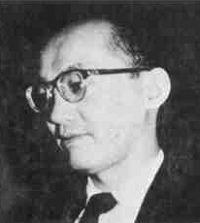 John Okada
John Okada
1923-1971
John Okada (September 23, 1923-February 20, 1971) was a Japanese-American writer. Born in Seattle, Washington, he was a student at the University of Washington when the Japanese attacked Pearl Harbor. Okada and his family were interned at Minidoka in 1942.
Okada served in the U.S. Air Force during World War II and later earned two bachelor’s degrees from the University of Washington and a master’s degree from Columbia University.
In 1957, Okada completed the manuscript for the novel, No-No Boy.
Okada is interred at Evergreen Washelli Memorial Park.
Source: http://en.wikipedia.org/wiki/John_Okada
 Bibliography
Bibliography
Press your browser’s BACK button to return to the previous page.
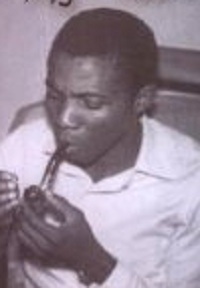 Christopher Okigbo
Christopher Okigbo
1932-1967
Christopher Ifekandu Okigbo (1932-1967) was a Nigerian poet who died fighting for the independence of Biafra. He was born on August 16, 1932, in the town of Ojoto, about 10 miles from the city of Onitsha in Anambra State.
Okigbo graduated from Government College Umuahia (in present Abia State, Nigeria), having earned himself a reputation as both a voracious reader and a versatile athlete. The following year, he was accepted to University College in Ibadan. Originally intending to study medicine, he switched to classics in his second year.
Upon graduating in 1956, he held a succession of jobs in various locations throughout the country while making his first forays into poetry. He worked at the Nigerian Tobacco Company, United Africa Company, the Fiditi Grammar School (where he taught Latin) and, finally, as Assistant Librarian at the University of Nigeria in Nsukka, where he helped to found the African Authors Association.
During those years, he began publishing his work in various journals, notably Black Orpheus. In 1963, he left Nsukka to assume the position of West African Representative of Cambridge University Press at Ibadan, a position affording the opportunity to travel frequently to the United Kingdom, where he attracted further attention. At Ibadan, he became an active member of the Mbari literary club and completed, composed or published the works of his mature years, including “Limits” (1964), “Silences” (1962-65), “Lament of the Masks” (1964), “Dance of the Painted Maidens” (1964) and his final highly prophetic sequence, “Path of Thunder” (1965-67), which was published posthumously in 1971 with his magnum opus, Labyrinths, incorporating the poems from the earlier collections.
In 1966, the Nigerian crisis came to a head. Okigbo, living in Ibadan at the time, relocated to eastern Nigeria to await the outcome of the turn of events that culminated in the secession of the eastern provinces as independent Biafra on May 30, 1967. Okigbo immediately joined the new state’s military as a volunteer, field-commissioned major. An accomplished soldier, he was killed in action during a major push by Nigerian troops against Nsukka, the university town where he found his voice as a poet and which he had vowed to defend with his life.
Source: http://en.wikipedia.org/wiki/Christopher_Okigbo
 Bibliography
Bibliography
Press your browser’s BACK button to return to the previous page.
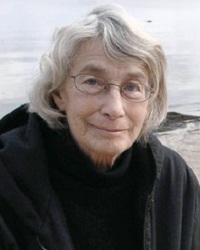 Mary Oliver
Mary Oliver
1935-2019
Mary Oliver (September 10, 1935-January 17, 2019) was an American poet who won the National Book Award and the Pulitzer Prize.
Oliver was born to Edward William and Helen M.V. Oliver on September 10, 1935, in Maple Heights, Ohio, a semi-rural suburb of Cleveland. Her father was a social studies teacher and an athletics coach in the Cleveland public schools. She began writing poetry at the age of 14 and, at 17, visited the home of the late Pulitzer Prize-winning poet Edna St. Vincent Millay in Austerlitz, upper New York state.
Oliver’s first collection of poems, No Voyage and Other Poems, was published in 1963, when she was 28. During the early 1980s, Oliver taught at Case Western Reserve University. Her fifth collection of poetry, American Primitive, won the Pulitzer Prize for Poetry in 1984. She was Poet-in-Residence at Bucknell University (1986) and Margaret Banister Writer in Residence at Sweet Briar College (1991), then moving to Bennington, Vermont, where she held the Catharine Osgood Foster Chair for Distinguished Teaching until 2001. She won the Christopher Award and the L.L. Winship/PEN New England Award for her piece, “House of Light” (1990); New and Selected Poems (1992) won the National Book Award. Her collections include: Winter Hours: Prose, Prose Poems, and Poems (1999); Why I Wake Early (2004); and New and Selected Poems, Volume 2 (2004). The first and second parts of “Leaf” and “The Cloud” are featured in The Best American Poetry 1999 and 2000, respectively, and her essays appear in Best American Essays 1996, 1998 and 2001.
Oliver died of lymphoma on January 17, 2019, at her home in Florida at the age of 83.
Source: http://en.wikipedia.org/wiki/Mary_Oliver
 Bibliography
Bibliography
Press your browser’s BACK button to return to the previous page.
 Frederick Law Olmsted
Frederick Law Olmsted
1822-1903
Olmsted was born in Hartford, Connecticut, in 1822. Between 1837 and 1857, Olmsted served in a variety of jobs: he was a clerk, a sailor in the China trade and a farmer, as well as working in many other professions. He moved to New York in 1848 and, in 1857, without having ever had any college education, he became the superintendent of New York’s Central Park.
As the superintendent of the park, he served as the administrator and then architect-in-chief of Central Park’s construction. Next, he served as the administrative head of the U.S. Sanitary Commission, which was the forerunner of the American Red Cross. His last job before forming his own firm was that of the manager of the vast Mariposa gold-mining estate in California.
In addition to designing for urban life, Olmsted was anxious to preserve areas of natural beauty for future public enjoyment. He served as the first head of the commission in charge of preserving Yosemite Valley and was a leader in establishing the Niagara Reservation, which he planned with Calvert Vaux, in 1887.
Between 1872 and 1895, when he retired, Olmsted’s firm carried out 550 projects. These projects included college campuses, the grounds to the U.S. Capitol and residential communities.
In late 1895, he suffered a mental breakdown and spent his remaining years resting in an asylum in Waverly, Massachusetts. He died in August 1903.
Source: http://www.fredericklawolmsted.com/bioframe.htm
 Bibliography
Bibliography
Press your browser’s BACK button to return to the previous page.
 Tillie Olsen
Tillie Olsen
1912-2007
Tillie Lerner Olsen (January 14, 1912-January 1, 2007) was an American writer associated with the political turmoil of the 1930s and was part of the first generation of American feminists.
Olsen was born to Russian-Jewish immigrants in Wahoo, Nebraska, and moved to Omaha while a young child. There, she attended Lake School in the Near North Side through the eighth grade, living among the city’s Jewish community. At age 15, she dropped out of Omaha High School to enter the workforce. Over the years, Olsen worked as a waitress, domestic worker and meat trimmer. She was also a union organizer and political activist in the Socialist community. In the 1930s, she joined the American Communist party. She was briefly jailed in 1934 while organizing a packing house workers’ union (the charge was “making loud and unusual noise”), an experience she wrote about in The Nation and The Partisan Review. She later moved to San Francisco, California, where in 1936 she met and lived with Jack Olsen, who was an organizer and a longshoreman. They married in 1944, on the eve of his departure for service in World War II. San Francisco remained her home until her 85th year, when she moved to Berkeley, California, to a cottage behind the home of her youngest sibling.
She attempted to introduce the challenges of her own life and contemporary social/political circumstances into a novel that she began in the 1930s, when she was only 19. Although only an excerpt of the first chapter was published in The Partisan Review in 1934, it led to a contract for a book with Random House. Olsen abandoned the book, however, due to work, child-rearing and household responsibilities. Decades later, in 1974, her unfinished novel was published as Yonnondio: From the Thirties.
Olsen first published Tell Me a Riddle in 1961, a collection of four short stories, most linked by the characters in one family. Each of the short stories was featured in Best American Short Stories the year it was published. The novella, Tell Me a Riddle, was awarded the O. Henry Prize in 1961 for Best American Short Story.
Olsen’s nonfiction volume, Silences, was an analysis of authors’ silent periods in literature, including writer’s blocks, unpublished work and the problems that working-class writers, and women in particular, have in finding the time to concentrate on their art.
Once her books were published, Olsen became a teacher and writer-in-residence at numerous colleges, such as Amherst College, Stanford University, MIT and Kenyon College. She was the recipient of nine honorary degrees, National Endowment for the Arts fellowships and a Guggenheim Fellowship.
Also among the honors bestowed upon Olsen was the Rea Award for the Short Story, in 1994, for a lifetime of outstanding achievement in the field of short story writing.
Olsen died on January 1, 2007, in Oakland, California.
Source: http://en.wikipedia.org/wiki/Tillie_Olsen
 Bibliography
Bibliography
Press your browser’s BACK button to return to the previous page.
 Charles Olson
Charles Olson
1910-1970
Charles Olson (December 27, 1910-January 10, 1970) was a second-generation American Modernist poet who was a link between earlier figures such as Ezra Pound and William Carlos Williams and the New American poets, which includes the New York School, the Black Mountain School, the Beat poets and the San Francisco Renaissance. Consequently, many Postmodern groups include Olson as a primary and precedent figure. He described himself not so much as a poet or writer but as “an archeologist of morning.”
Olson was born to Karl Joseph and Mary Hines Olson and grew up in Worcester, Massachusetts, where his father worked as a mailman. Olson spent summers in Gloucester, Massachusetts, which was to become the focus of his writing. He studied literature and American studies, earning a B.A and M.A at Wesleyan University. For two years, Olson taught English at Clark University and then entered Harvard University in 1936, where he finished his coursework for a Ph.D in American civilization but failed to complete his degree. He then received a Guggenheim fellowship for his studies of Herman Melville. His first poems were written in 1940.
In 1941, Olson moved to New York and became the publicity director for the American Civil Liberties Union. One year later, he moved to Washington, D.C., where he worked in the Foreign Language Division of the Office of War Information and spent the rest of the war years, eventually rising to become the assistant chief of the division. After the war, Olson dedicated himself to writing, moving to Key West, Florida, in 1945.
In 1951, Olson became a visiting professor at Black Mountain College in North Carolina. When the college closed in 1956, Olson settled in Gloucester, Massachusetts. He served as a visiting professor at the State University of New York at Buffalo (1963-1965) and at the University of Connecticut (1969).
Olson’s life was marred by alcoholism, which contributed to his early death from liver cancer. He died in New York in 1970, two weeks past his 59th birthday, having completed The Maximus Poems a month earlier.
Source: http://en.wikipedia.org/wiki/Charles_Olson
 Bibliography
Bibliography
Press your browser’s BACK button to return to the previous page.
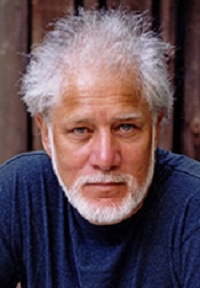 Michael Ondaatje
Michael Ondaatje
1943-
Philip Michael Ondaatje (born September 12, 1943) is a Sri Lankan-born Canadian novelist and poet of Burgher, Dutch and India origin. He is perhaps best known for his Booker Prize-winning novel, The English Patient, which was adapted into an Academy Award-winning film.
Ondaatje was born in Colombo, Sri Lanka in 1943 and moved to England in 1954. He attended Dulwich College. After relocating to Canada in 1962, Ondaatje became a Canadian citizen. He studied for a time at Bishop’s College School and Bishop’s University in Lennoxville, Quebec, but moved to Toronto, where he received his B.A. from the University of Toronto and his M.A. from Queen’s University, Kingston, Ontario. He then began teaching at the University of Western Ontario in London, Ontario. In 1970, he settled in Toronto and, from 1971 to 1990, taught English Literature there at York University and Glendon College.
Ondaatje’s work includes fiction, autobiography, poetry and film. He has published 13 books of poetry and won the Governor General’s Award for The Collected Works of Billy the Kid (1970) and There’s a Trick with a Knife I’m Learning to Do: Poems 1973-1978 (1979). Anil’s Ghost was the winner of the 2000 Giller Prize, the Prix Medicis, the Kiriyama Pacific Rim Book Prize, the 2001 Irish Times International Fiction Prize and Canada’s Governor General’s Award. The English Patient won the Booker Prize, the Canada Australia Prize and the Governor General’s Award. The English Patient could be considered a sequel to In the Skin of a Lion (1987). Coming through Slaughter was the winner of the 1976 Books in Canada First Novel Award. Divisadero won the 2007 Governor General’s Award. Running in the Family (1982) is a semi-fictional memoir of his Sri Lankan childhood.
Source: http://en.wikipedia.org/wiki/Michael_Ondaatje
 Bibliography
Bibliography
Press your browser’s BACK button to return to the previous page.
 Amelia Opie
Amelia Opie
1769-1853
Amelia Opie, nee Alderson (November 12, 1769-December 2, 1853), was an English author who published numerous novels in the Romantic Period of the early 19th century through 1828. She was the daughter of James Alderson, a physician, and Amelia Briggs of Norwich, England.
In 1798, Alderson married John Opie, the painter. The nine years of her married life before her husband’s death were happy, although her husband did not share her love of society. With his encouragement, in 1801 she completed a novel, Father and Daughter, which showed genuine fancy and pathos.
Opie published regularly after that. In 1802, she completed a volume of verse and additional books followed: Adeline Mowbray (1804), Simple Tales (1806), Temper (1812), Tales of Real Life (1813), Valentine’s Eve (1816), Tales of the Heart (1818) and Madeline (1822).
Opie wrote The Dangers of Coquetry at age 18. Her novel, Father and Daughter (1801), is about misled virtue and family reconciliation. Encouraged by Mary Wollstonecraft, she wrote Adeline Mowbray (1804), an exploration of the relationship between mother and daughter.
Opie divided her time between London and Norwich. She was a friend of writers Sir Walter Scott, Richard Brinsley Sheridan and Madame de Stael.
In 1825, through the influence of Joseph John Gurney, she joined the Society of Friends. After a book entitled Detraction Displayed and contributions to periodicals, she wrote nothing more. The rest of her life was spent travelling and working with charities.
After a visit to Cromer, a seaside resort on the North Norfolk coast, she caught a chill and retired to her bedroom. A year later, on December 2, 1853, she died at Norwich.
Source: http://en.wikipedia.org/wiki/Amelia_Opie
 Bibliography
Bibliography
Press your browser’s BACK button to return to the previous page.
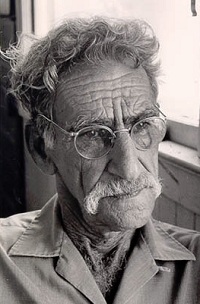 George Oppen
George Oppen
1908-1984
George Oppen (April 24, 1908-July 7, 1984) was an American poet best known as one of the members of the Objectivist group of poets. He abandoned poetry in the 1930s for political activism and later moved to Mexico to avoid the attentions of the House Un-American Activities Committee. He returned to poetry – and to the United States – in 1958 and received the Pulitzer Prize in 1969.
Oppen was born in New Rochelle, New York, into a Jewish family. His father was George August Oppenheimer, a successful diamond merchant; his mother was Elsie Rothfeld. His father changed the family name to Oppen in 1927. Oppen’s childhood was one of considerable affluence; the family was well tended by servants and maids and Oppen enjoyed all the benefits of a wealthy upbringing – horse riding, expensive automobiles and frequent trips to Europe. He was taught carpentry by the family butler; as an adult, Oppen found work as a carpenter and cabinetmaker.
While living on the road, Oppen began writing poems and publishing in local magazines. In 1929, he came into a small inheritance that afforded him relative financial independence. In 1930, he moved to California and then to France. Oppen had begun working on poems for what was to be his first book, Discrete Series, a seminal work in early Objectivist history.
Oppen moved to Brooklyn, New York in early 1960 and continuously composed poems. Within two years, Oppen had assembled enough poems for a book and began publishing the pieces in Poetry.
The poems of Oppen’s book, The Materials, were works that, as he said, should have been written 10 years earlier. Oppen published two more collections of poetry during the 1960s: This in Which (1965) and Of Being Numerous (1968), the latter of which garnered him the Pulitzer Prize in 1969.
Oppen was able to complete and see into publication his Collected Poems, together with a new section, Myth of the Blaze, in 1975. In 1977, he completed his final volume of poetry, Primitive. During this time, his final illness, Alzheimer’s disease, began to manifest itself with confusion, failing memory and other losses. The disease was eventually to make it impossible for him to continue writing.
George Oppen, age 76, died of pneumonia with complications from Alzheimer’s disease in a convalescent home in California on July 7, 1984.
Source: http://en.wikipedia.org/wiki/George_Oppen
 Bibliography
Bibliography
Press your browser’s BACK button to return to the previous page.
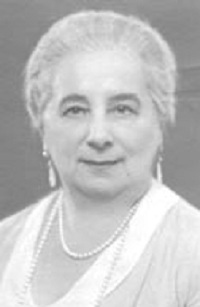 Emmuska Baroness Orczy
Emmuska Baroness Orczy
1865-1947
Baroness Emma Magdolna Rozalia Maria Jozefa Borbala “Emmuska” Orczy de Orczi (September 23, 1865-November 12, 1947) was a British novelist, playwright and artist of Hungarian noble origin. She is most known for her series of novels featuring the “Scarlet Pimpernel.”
Orczy was born in Tarnaors, Heves County, Hungary, and was the daughter of composer Baron Felix Orczy de Orczi and Countess Emma Wass von Szentegyed und Czege. Her parents left Hungary in 1868, fearful of the threat of a peasant revolution. They lived in Budapest, Brussels and Paris, where she studied music without success. Finally, in 1880, the family moved to London, where they lodged with their countryman, Francis Pichler, at 162 Great Portland Street. Orczy attended West London School of Art and then Heatherley’s School of Fine Art.
The family had very little money and Orczy started to work with her husband as a translator and illustrator to supplement his low earnings. Her first novel, The Emperor’s Candlesticks (1899), was a failure. She did, however, find a small following with a series of detective stories in The Royal Magazine. Her next novel, In Mary’s Reign (1901), did better.
In 1903, she and her husband wrote a play based on one of her short stories about an English aristocrat, Sir Percy Blakeney, Bart., who rescued French aristocrats from the French Revolution: The Scarlet Pimpernel. She submitted her novelization of the story under the same title to 12 publishers.
Orczy went on to write more than a dozen sequels featuring Sir Percy Blakeney, his family and the other members of the League of the Scarlet Pimpernel, of which the first, I Will Repay (1906), was the most popular. The last Pimpernel book, Mam’zelle Guillotine, was published in 1940. None of her three subsequent plays matched the success of The Scarlet Pimpernel. She also wrote popular mystery fiction and many adventure romances. Her Lady Molly of Scotland Yard was an early example of a female detective as the main character. Other popular detective stories featured The Old Man in the Corner, a sleuth who chiefly used logic to solve crimes. The Nest of the Sparrowhawk was published in 1909.
Orczy died in Henley-on-Thames on November 12, 1947.
Source: http://en.wikipedia.org/wiki/Emma_Orczy
 Bibliography
Bibliography
Press your browser’s BACK button to return to the previous page.
 Simon Ortiz
Simon Ortiz
1941-
Simon J. Ortiz (born on May 27, 1941, in Albuquerque, New Mexico) is a Native American writer of the Acoma Pueblo tribe and one of the key figures in the second wave of what has been called the Native American Renaissance. He is one of the most respected and widely read Native American poets.
Ortiz, a half-blooded Pueblo, is a member of the Badger or “Dyaamih” Clan. He was raised in the Acoma village of McCartys (the Keresan name is “Deetzeyaamah”) and spoke only Keresan at home. His father, a railroad worker and woodcarver, was an elder in the clan who was charged with keeping the religious knowledge and customs of the pueblo.
Ortiz attended McCartys Day School through the sixth grade, after which he was sent to St. Catherine’s Indian School in Santa Fe – most Native children at that time were sent to Indian boarding schools. He transferred to Albuquerque Indian School, which taught trade classes such as plumbing and mechanics.
After a three-year stint in the U.S. military, Ortiz returned to college at University of New Mexico. There, he discovered few ethnic voices within the American literature canon and began to pursue writing as a way to express the generally unheard Native American voice that was only beginning to emerge in the midst of political activism. Two years later, in 1968, he received a fellowship for writing at the University of Iowa in the International Writers Program.
In 1988, he was appointed as tribal interpreter for Acoma Pueblo and, in 1989, he became First Lieutenant Governor for the pueblo. In 1982, he became a consulting editor of The Pueblo of Acoma Press.
Since 1968, Ortiz has taught creative writing and Native American literature at various institutions, including San Diego State, the Institute of American Indian Arts in Santa Fe, Navajo Community College, the College of Marin, the University of New Mexico, Sinte Gleska University (one of the first U.S. tribal colleges) and the University of Toronto. He currently teaches at Arizona State University.
Source: http://en.wikipedia.org/wiki/Simon_J._Ortiz
 Bibliography
Bibliography
Press your browser’s BACK button to return to the previous page.
 George Orwell
George Orwell
1903-1950
Eric Arthur Blair (June 25, 1903-January 21, 1950), better known by his pen name, George Orwell, was an English novelist and journalist. His work is marked by keen intelligence and wit, a profound awareness of social injustice, an intense opposition to totalitarianism, a passion for clarity in language and a belief in democratic socialism.
Considered perhaps the 20th century’s best chronicler of English culture, Orwell wrote literary criticism, poetry, fiction and polemical journalism. He is best known for the dystopian novel, Nineteen Eighty-Four (1949), and the allegorical novella, Animal Farm (1945), which together have sold more copies than any two books by any other 20th century author. His book, Homage to Catalonia (1938), an account of his experiences in the Spanish Civil War, is widely acclaimed, as are his numerous essays on politics, literature, language and culture.
Early on the morning of January 21, 1950, an artery burst in his lungs, killing him at age 46.
Source: http://en.wikipedia.org/wiki/George_Orwell
 Bibliography
Bibliography
Press your browser’s BACK button to return to the previous page.
 Dorothy Osborne
Dorothy Osborne
1627-1695
Dorothy Osborne’s sole literary remains consist of a slim book of 77 letters written to her husband-to-be, Sir William Temple, during their courtship, plus nine letters written after their marriage. Slight as the subject would seem to be, the letters are brilliantly written and show a flair for self-examination. They form almost a novel in themselves and subsequent readers have found them both fascinating and stylistically charming.
Osborne was born in 1627 to Sir Peter Osborne and his wife, Dorothy (nee Danvers). Sir Peter was the last royalist holdout until the parliamentary troops of the Puritan government forced him to surrender his fortress. Following his surrender, the Osbornes returned to their estate at Chicksands, where they lived in conditions close to penury until the Restoration.
Osborne met Sir William Temple in 1648 as he was on his way to France. They were attracted to each other and Temple joined the family party as it went to France. A correspondence ensued. That the two families did not approve of an alliance between the lovers made their correspondence all the more titillating, being secretly carried back and forth by various servants. When it seemed that the lovers were to be married at last, Dorothy contracted smallpox, which not only disfigured her but caused a delay to the wedding. The two were ultimately married on Christmas Day 1654.
The letters that have survived begin in 1652 and end in October 1654 (none of the Osborne letters are specifically dated and the present dating has been established by editors. As for the letters written during the marriage, most editors have given up trying to date them).
Moor Park was a meeting place for important people from the court and government. Lady Temple was the hostess to many officials from London, yet there is little to no mention of her in contemporary writing. Not even Jonathan Swift makes much mention of her in his work. She died on February 7, 1695, leaving behind a legacy that was not fully appreciated until the first appearance of her letters in a scholarly format, edited by Sir Edward Parry. The most recent edition was edited by Kenneth Parker (1987). Lord David Cecil’s essay on Dorothy Osborne in his Two Quiet Lives (1948) is helpful in understanding the situation of the lovers.
Source: http://www.luminarium.org/sevenlit/osborne/osbornebio.htm
 Bibliography
Bibliography
Press your browser’s BACK button to return to the previous page.
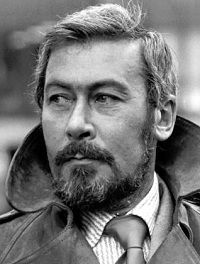 John Osborne
John Osborne
1929-1994
John James Osborne (December 12, 1929-December 24, 1994) was an English playwright, screenwriter, actor and critic of the Establishment. The success of his 1956 play, Look Back in Anger, transformed English theatre.
In a productive life of more than 40 years, Osborne explored many themes and genres, writing for stage, film and TV. His personal life was extravagant and iconoclastic. He was notorious for the ornate violence of his language, not only on behalf of the political causes he supported but also against his own family, including his wives and children.
Osborne was one of the first writers to address Britain’s purpose in the post-imperial age. He was the first to question the point of the monarchy on a prominent public stage. During his peak (1956-1966), he helped make contempt an acceptable and now even cliched onstage emotion, argued for the cleansing wisdom of bad behavior and bad taste, and combined unsparing truthfulness with devastating wit.
He died in 1994 from complications from diabetes at the age of 65 at his home in Clunton, near Craven Arms, Shropshire.
Source: http://en.wikipedia.org/wiki/John_Osborne
 Bibliography
Bibliography
Press your browser’s BACK button to return to the previous page.
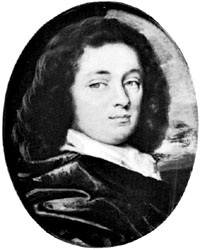 Thomas Otway
Thomas Otway
1652-1685
Thomas Otway (March 3, 1652-April 14, 1685) was an English dramatist of the Restoration period, best known for Venice Preserv’d, or A Plot Discover’d (1682).
Otway was born at Trotton near Midhurst, the parish of which his father, Humphrey Otway, was at that time curate. He was educated at Winchester College and, in 1669, entered Christ Church, Oxford, as a commoner but left the university without a degree in the autumn of 1672.
In London, he made the acquaintance of Aphra Behn who, in 1672, cast him as the old king in her play, Forc’d Marriage, or the Jealous Bridegroom, at the Dorset Garden Theatre. However, he had a bad attack of stage fright and never made a second appearance.
Meanwhile, he had fallen in love with “Mrs. Barry,” who played many of the leading parts in his plays. Six letters to her survive, the last of them referring to a broken appointment in the Mall. “Mrs. Barry” seems to have flirted with Otway but had no intention of surrendering to him. In 1678, driven to desperation by her, Otway obtained a commission through Charles, Earl of Plymouth, a natural son of Charles II, in a regiment serving in the Netherlands. The English troops were disbanded in 1679 but were left to find their way home as best they could. They were paid with depreciated paper and Otway arrived in London late in the year.
He apparently ceased to struggle against his poverty and misfortunes. He is said to have emerged from his retreat at the Bull on Tower Hill to beg for bread. A passer-by, learning who he was, gave him a guinea, with which Otway hastened to a baker’s shop. He ate too hastily and choked on the first mouthful. Whether this account of his death be true or not, it is certain that he died in the utmost poverty and was buried on April 16, 1685, in the churchyard of St. Clement Danes.
Source: http://en.wikipedia.org/wiki/Thomas_Otway
 Bibliography
Bibliography
Press your browser’s BACK button to return to the previous page.
 Sir Thomas Overbury
Sir Thomas Overbury
1581-1613
Sir Thomas Overbury (1581-September 15, 1613), English poet and essayist, was the son of Nicholas Overbury of Bourton-on-the-Hill and was born at Compton Scorpion, near Ilmington, in Warwickshire.
In the autumn of 1595, he became a gentleman commoner of Queen’s College, Oxford, took his degree of B.A. in 1598 and came to London to study law in the Middle Temple. He found favor with Sir Robert Cecil, travelled on the Continent and began to enjoy a reputation for an accomplished mind and free manners. He was knighted in June 1608 and, in 1609, he travelled in France and the Low Countries.
Overbury wrote and circulated widely in manuscript the poem, “His Wife” (1614), which was a picture of the virtues a young man should demand in a woman before he has the rashness to marry her.
Combined with later editions of The Wife, and gradually adding to its bulk, were Characters (first printed in the second of the 1614 editions), The Remedy of Love (1620) and Observations in Foreign Travels (1626).
When Overbury declined an offer by James I to serve as ambassador to the court of Michael of Russia, the king became convinced of Overbury’s arrogance and had him thrown into the Tower of London on April 22, 1613, where he died on September 15.
Source: http://www.luminarium.org/sevenlit/overbury/overbio.htm
 Bibliography
Bibliography
Press your browser’s BACK button to return to the previous page.
 Ovid
Ovid
63 BC-14 AD
Publius Ovidius Naso (March 20, 43 BC-17/18 AD), known as Ovid in the English-speaking world, was a Roman poet who is best known as the author of the three major collections of erotic poetry – Heroides, Amores and Ars Amatoria – and of the “Metamorphoses,” a mythological hexameter poem. He is also well known for the Fasti, about the Roman calendar, and the Tristia and Epistulae ex Ponto, two collections of poems written in exile on the Black Sea. Ovid was also the author of several smaller pieces, the “Remedia Amoris,” the “Medicamina Faciei Femineae” and the long curse-poem, “Ibis.” He also authored a lost tragedy, Medea. He is considered a master of the elegiac couplet and is traditionally ranked alongside Virgil and Horace as one of the three canonic poets of Latin literature.
Ovid talks more about his own life than most other Roman poets. Information about his biography is drawn primarily from his poetry, especially Tristia, which gives a long autobiographical account of his life. Other sources include Seneca and Quintilian.
Ovid was born in Sulmo (Sulmona), in an Apennine valley east of Rome, to an important equestrian family. He was educated in Rome and studied rhetoric toward the practice of law. After the death of his brother at 20 years of age, Ovid renounced law and began travelling to Athens, Asia Minor and Sicily. He held minor public posts but resigned to pursue poetry probably around 29-25 BC. His first recitation has been dated to around 25 BC, when Ovid was 18.
Ovid was very popular at the time of his early works but was later exiled by the emperor Augustus in AD 8. His wife was connected in some way to the influential gens Fabia and would help him when he was exiled to Tomis, on the Black Sea. Ovid wrote that the reason for his exile was “carmen et error” – “a poem and a mistake.” The emperor’s grandchildren, Agrippa Postumus and Julia the Younger, were banished around the same time; Julia’s husband, Lucius Aemilius Paullus, was put to death for conspiracy against Augustus, a conspiracy about which Ovid might have known.
Ovid died at Tomis in 17 AD. It is thought that the Fasti, which he spent time revising, were published posthumously. He was allegedly buried a few kilometers away in a nearby town. In 1930, that town was renamed Ovidiu in his honor. As Ovid spent the last years of his life and literary work in what is now Romania, Romanian nationalists have adopted him as “the First Romanian Poet” and placed him in the pantheon of Romanian national heroes.
Source: http://en.wikipedia.org/wiki/Ovid
 Bibliography
Bibliography
Press your browser’s BACK button to return to the previous page.
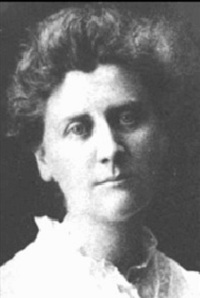 Mary White Ovington
Mary White Ovington
1865-1951
Mary White Ovington (April 11, 1865-July 15, 1951) was a suffragette, socialist, Unitarian, journalist and co-founder of the NAACP.
Ovington was born in Brooklyn, New York. Her parents, members of the Unitarian Church, were supporters of women’s rights and had been involved in the anti-slavery movement. Educated at Packer Collegiate Institute and Radcliffe College, Ovington became involved in the campaign for civil rights in 1890 after hearing Frederick Douglass speak in a Brooklyn church.
In 1895, she helped found the Greenpoint Settlement in Brooklyn. Appointed head of the project the following year, Ovington remained until 1904, when she was appointed fellow of the Greenwich House Committee on Social Investigations. Over the next five years, she studied employment and housing problems in Black Manhattan. During her investigations, she met William Du Bois, from Harvard University, and was introduced to the founding members of the Niagara Movement.
Influenced by the ideas of William Morris, Ovington joined the Socialist Party in 1905, where she met people such as Daniel De Leon, Asa Philip Randolph, Floyd Dell, Max Eastman and Jack London, who argued that racial problems were as much a matter of class as of race. She wrote for radical journals and newspapers such as The Masses, The New York Evening Post and The New York Call. She also worked with Ray Stannard Baker and influenced the content of his book, Following the Color Line, published in 1908.
On September 3, 1908, she read an article written by socialist William English Walling, entitled “Race War in the North,” in The Independent. Ovington responded to the article by writing Walling and meeting at his apartment in New York City along with social worker Dr. Henry Moskowitz. The group decided to launch a campaign by issuing a “call” for a national conference on the civil and political rights of African-Americans on the centennial of Abraham Lincoln’s birthday, February 12, 1909.
Many people responded to the “call” that eventually led to the formation of the National Negro Committee, which conducted its first meeting in New York on May 31 and June 1, 1909. By May 1910, the National Negro Committee and attendants, at its second conference, organized a permanent body known as the National Association for the Advancement of Colored People (NAACP), where Ovington was appointed as its executive secretary.
The following year, Ovington attended the Universal Races Congress in London. She remained active in the struggle for women’s suffrage and, as a pacifist, opposed America’s involvement in World War I. During the war, Ovington supported Asa Philip Randolph and his magazine, The Messenger, which campaigned for Black civil rights.
After the war, Ovington served the National Association for the Advancement of Colored People as board member, executive secretary and chairman. The NAACP fought a long legal battle against segregation and racial discrimination in housing, education, employment, voting and transportation. The organization appealed to the U.S. Supreme Court to rule that several laws passed by Southern states were unconstitutional and won three important judgments between 1915-1923 concerning voting rights and housing.
Ovington wrote several books and articles, including: a study of black Manhattan, Half a Man (1911); Status of the Negro in the United States (1913); Socialism and the Feminist Movement (1914); an anthology for black children, The Upward Path (1919); biographical sketches of prominent African-Americans, Portraits in Color (1927); an autobiography, Reminiscences (1932); and a history of the NAACP, The Walls Came Tumbling Down (1947).
Ovington retired as a board member of the National Association for the Advancement of Colored People in 1947, ending 38 years of service with the organization. She died on July 15, 1951.
Source: http://en.wikipedia.org/wiki/Mary_White_Ovington
 Bibliography
Bibliography
Press your browser’s BACK button to return to the previous page.
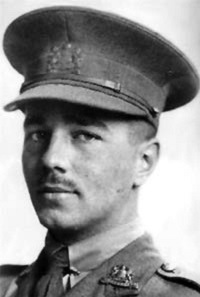 Wilfred Owen
Wilfred Owen
1893-1918
Wilfred Edward Salter Owen (March 18, 1893-November 4, 1918) was an English poet and soldier, one of the leading poets of World War I. His shocking, realistic war poetry on the horrors of trenches and gas warfare was heavily influenced by his friend, Siegfried Sassoon, and stood in stark contrast to both the public perception of war at the time and to the confidently patriotic verse written earlier by war poets, such as Rupert Brooke. Among his best-known works – most of which were published posthumously – are “Dulce et Decorum Est,” “Insensibility,” “Anthem for Doomed Youth,” “Futility” and “Strange Meeting.”
Owen was born the eldest of four children in a house near Oswestry in Shropshire, called Plas Wilmot, of mixed English and Welsh ancestry. He was educated at the Birkenhead Institute and at Shrewsbury Technical School and discovered his vocation in 1903 or 1904 during a holiday spent in Cheshire. Shortly after leaving school in 1911, Owen passed the matriculation exam for the University of London, but not with the first-class honors needed for a scholarship, which in his family’s circumstances was the only way he could have afforded to attend.
In return for free lodging, and some tuition for the entrance exam, Owen worked as lay assistant to the Vicar of Dunsden near Reading and as a pupil-teacher at Wyle Cop School. He then attended classes at University College, Reading, in botany and, later, at the urging of the head of the English Department, free lessons in Old English.
On October 21, 1915, he enlisted in the Artists’ Rifles Officers’ Training Corps. For the next seven months, he trained at Hare Hall Camp in Essex. On June 4, 1916, he was commissioned as a second lieutenant (on probation) in the Manchester Regiment. Owen started the war as a cheerful and optimistic man. However, his outlook on the war was to be changed dramatically after two traumatic experiences. First, he was blown high into the air by a trench mortar, landing among the remains of a fellow officer. Soon after, he became trapped for days in an old German dugout. After these two events, Owen was diagnosed as suffering from shell shock and sent to Craiglockhart War Hospital in Edinburgh for treatment.
After a period of convalescence in Northern Ireland, then a short spell working as a teacher in nearby Tynecastle High School, he returned to light regimental duties. In March 1918, he was posted to the Northern Command Depot at Ripon. A number of poems were composed in Ripon, including “Futility” and “Strange Meeting.”
After returning to the front, Owen led units of the Second Manchesters on October 1, 1918, to storm a number of enemy strong points near the village of Joncourt. However, only one week before the end of the war, while attempting to traverse a canal, he was shot in the head and killed.
Source: http://en.wikipedia.org/wiki/Wilfred_Owen
 Bibliography
Bibliography
Press your browser’s BACK button to return to the previous page.
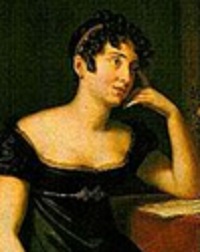 Sydney Owenson
Sydney Owenson
1776-1859
Sydney, Lady Morgan (nee Owenson; c. 1776-April 14, 1859), was an Irish novelist. She was born on a crossing between Great Britain and Ireland, the daughter of Robert Mac Owen, an Irish actor.
Owenson was one of the most vivid and hotly discussed literary figures of her generation. She began her career with a precocious volume of poems. She collected Irish tunes, for which she composed the words, thus setting a fashion adopted with signal success by Thomas Moore. Her St. Clair (1804), a novel of ill-judged marriage, ill-starred love and impassioned nature worship, in which the influence of Johann Wolfgang von Goethe and Jean-Jacques Rousseau was apparent, at once attracted attention.
Another novel, The Novice of St. Dominick (1806), was also praised, but the book that made her reputation and brought her name into warm controversy was The Wild Irish Girl (1806). Patriotic Sketches and Metrical Fragments followed in 1807.
In 1811, she published The Missionary: An Indian Tale, revising it shortly before her death as Luxima, the Prophetess. In 1814, she produced her best novel, O’Donnell, followed by another novel, Florence Macarthy (1818).
Italy, a companion work to her France, was published in 1821. The results of her Italian historical studies were given in her Life and Times of Salvator Rosa (1823). Then she turned again to Irish manners and politics with a matter-of-fact book, Absenteeism (1825), and a romantic novel, The O’Briens and the O’Flaherties (1827).
From William Lamb, 2nd Viscount Melbourne, Lady Morgan obtained a pension of £300. During the later years of her long life she published The Book of the Boudoir (1829), Dramatic Scenes from Real Life (1833), The Princess (1835), Woman and Her Master (1840), The Book without a Name (1841) and Passages from My Autobiography (1859).
She died on April 14, 1859, and is buried in Brompton Cemetery, London.
Source: http://en.wikipedia.org/wiki/Lady_Morgan
 Bibliography
Bibliography
Press your browser’s BACK button to return to the previous page.
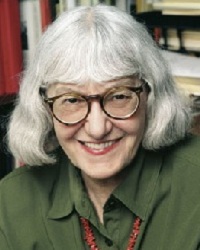 Cynthia Ozick
Cynthia Ozick
1928-
Cynthia Ozick (born April 17, 1928) is a Jewish-American short story writer, novelist and essayist. She was born in New York City, the second of two children. She moved to the Bronx with her Russian-born parents, Celia (Regelson) and William Ozick, proprietors of the Park View Pharmacy in the Pelham Bay neighborhood. As a girl, Ozick helped to deliver prescriptions. She attended Hunter College High School in Manhattan. She earned her B.A. from New York University and went on to study English Literature at Ohio State University, where she completed an M.A. Ozick is married to Bernard Hallote, a lawyer, with whom she has a daughter. She is the niece of the Hebraist Abraham Regelson.
Ozick’s fiction and essays are often about Jewish-American life but she also writes on a broad range of topics including politics, history and literary criticism. In addition, she has written and translated poetry.
Her novel, Heir to the Glimmering World (2004), called The Bear Boy in the United Kingdom, received much praise in the literary press. The Din in the Head is her sixth collection of literary essays. In 1986, she was selected as the first winner of the Rea Award for the Short Story. In 2000, she won the National Book Critics Circle Award for Quarrel & Quandary. Ozick was on the short list for the 2005 Man Booker International Prize and, in 2008, she was awarded the PEN/Malamud Award established by Bernard Malamud’s family to honor excellence in the art of the short story.
Ozick also won the National Book Critics Circle award. Three of her stories won first prize in the O. Henry competition.
Source: http://en.wikipedia.org/wiki/Cynthia_Ozick
 Bibliography
Bibliography
Press your browser’s BACK button to return to the previous page.
 Z.Z. Packer
Z.Z. Packer
1973-
Z.Z. Packer (born January 12, 1973, in Chicago, Illinois) is an African-American author, notable for her works of short fiction.
She grew up in Atlanta, Georgia, and Louisville, Kentucky. “ZZ” was a childhood nickname; her given name is Zuwena (Swahili for “good”). Recognized as a talented writer at an early age, her first significant publication was in Seventeen magazine at the age of 19. She is a 1990 graduate of Seneca High School in Louisville, Kentucky.
Packer attended Yale University, where she received a B.A in 1994. Her graduate work included an M.A. at Johns Hopkins University in 1995 and an M.F.A. from the Iowa Writers’ Workshop of the University of Iowa in 1999. She was named a Stegner Fellow in Fiction at Stanford University.
Shortly thereafter, she entered the national literary scene with a high-profile appearance in the “Debut Fiction” issue of The New Yorker (2000). Her short story in the issue became the title story in her collection, Drinking Coffee Elsewhere (2003). Her stories have also appeared in Best American Short Stories 2000 and 2003 and she edited New Stories from the South: The Year’s Best, 2008.
She was Writer-in-Residence at the Tulane University English Department Creative Writing Program during the Fall 2007 semester and became the Lurie Distinguished Visiting Professor of Creative Writing at San Jose State University during the Spring 2008 semester. She taught Creative Writing at the Michener Center for Writers at the University of Texas at Austin in Fall 2008 and was a Vassar Writer-in-Residence in spring 2009. In spring 2010, she was the Visiting Professor of Creative Writing in the MFA Program of Creative Writing at Texas State University and became a Hodder fellow at Princeton University in Fall 2010.
Source: http://en.wikipedia.org/wiki/ZZ_Packer
 Bibliography
Bibliography
Press your browser’s BACK button to return to the previous page.
 Thomas Paine
Thomas Paine
1737-1809
Thomas Paine, the radical propagandist and voice of the common man, was born in Thetford in Norfolk on January 29, 1737. His father, Joseph, was a poor Quaker corset maker who tried to provide his son with an education at the local grammar school but eventually was forced to apprentice him to his trade. Paine was unable to accept this occupation. After a short time at sea, Paine returned to his trade in Kent but then served as an exciseman in Lincolnshire, followed by a stint as a school teacher in London, before he again settled down in 1768 as an excise officer in Lewes in East Sussex. For the next six years, he combined his duties as excise officer with managing a small shop.
At Lewes, Paine was active in local affairs, serving on the town council and establishing a debating club at a local tavern. As a shopkeeper, however, he was a failure. In April 1774, Paine was discharged from his duties for having absented himself from his post without leave. He published the pamphlet, “The Case of the Officers of Excise” (1772), and devoted his time campaigning in London on behalf of the excise officers. In London, he met Benjamin Franklin, who helped him to emigrate to America in October 1774.
Paine settled in Philadelphia, where he soon began a new career as a journalist. He contributed articles to The Pennsylvania Magazine on a wide range of topics. Thus, on January 10, 1776, he published a short pamphlet, “Common Sense,” which immediately established his reputation as a revolutionary propagandist.
After American independence had been won, Paine played no part in the establishment of the new republic. Instead, he busied himself trying to invent a smokeless candle and devising an iron bridge.
Restless because he was no longer at the center of affairs, Paine left for Europe in 1787. For the next four years, he divided his time between Britain and France. Although he spent much of his time trying to find financial support for his iron bridge, he eventually resumed work as a revolutionary propagandist in the 1790s. Edmund Burke’s resistance to the French Revolution inspired Paine to write his most influential work, the “Rights of Man” (Part I in 1791, Part II in 1792). His popularity sounded the alarm and he was forced to leave Britain in September 1792. He was condemned in his absence and declared an outlaw.
Paine immediately immersed himself in French affairs for the next 10 years, although he still hoped to see a revolution in Britain. In his “Letter Addressed to the Addressers of the Late Proclamation” (1792), he rejected the policy of appealing to parliament for reform and instead urged British radicals to call a national convention to establish a republican form of government.
In August 1792, Paine was made a French citizen and, a month later, was elected to the National Convention. Because he did not speak French and had to have his speeches read for him, Paine did not make much of an impact on the Convention. His association with the moderate republicans (Girondins) made him suspect in the Jacobin camp. In January 1793, he alienated many extremists by opposing the execution of Louis XVI. When military defeat fanned Jacobinism into hysteria, he fell victim to The Terror. From December 28, 1793, until November 4, 1794, he was incarcerated in Luxembourg prison, until the intercession of the new American minister, James Monroe, secured his release.
During his imprisonment, Paine embarked on his third influential work, “The Age of Reason” (London and Boston, 1794-95).
Paine finally returned to America in October 1802 and was well-received by Thomas Jefferson. Increasingly neglected and ostracized, Paine’s last years were marked by poverty, poor health and alcoholism. When he died in New York on June 8, 1809, he was virtually an outcast. Because he could not be buried in consecrated ground, he was laid to rest in a corner of his small farm in New Rochelle.
Source: http://www.historyguide.org/intellect/paine.html
 Bibliography
Bibliography
Press your browser’s BACK button to return to the previous page.
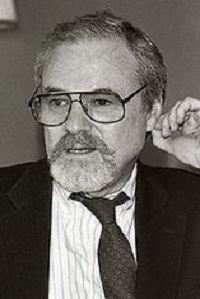 Alan J. Pakula
Alan J. Pakula
1928-1998
Alan Jay Pakula (April 7, 1928-November 19, 1998) was an American film director, writer and producer noted for his contributions to the conspiracy-thriller genre.
Pakula was born in the Bronx, New York, to parents of Polish-Jewish descent, Jeanette (nee Goldstein) and Paul Pakula. He was educated at The Hill School, Pottstown, Pennsylvania, and Yale University, where he majored in drama.
Pakula started his Hollywood career as an assistant in the cartoon department at Warner Brothers. In 1957, he undertook his first production role for Paramount Pictures. In 1962, he produced To Kill a Mockingbird, for which he was nominated for a Best Picture Academy Award. In 1969, he directed his first feature, The Sterile Cuckoo.
In 1971, Pakula released the first installment of what would informally come to be known as his “paranoia trilogy” – Klute. This was followed in 1974 by The Parallax View. Finally, in 1976, Pakula rounded out the “trilogy” with All the President’s Men. Pakula scored another hit in 1982 with Sophie’s Choice. Later commercial successes included Presumed Innocent and another political thriller, The Pelican Brief.
Pakula died on November 19, 1998, in a freak car accident on the Long Island Expressway in Melville, New York. He was 70 years old.
Source: http://en.wikipedia.org/wiki/Alan_J._Pakula
 Bibliography
Bibliography
Press your browser’s BACK button to return to the previous page.
 Chuck Palahniuk
Chuck Palahniuk
1962-
Charles Michael “Chuck” Palahniuk (born February 21, 1962) is an American transgressional fiction novelist and freelance journalist. He is best known for the award-winning novel, Fight Club, which was later made into a feature film. He lives near Portland, Oregon, and spends time in Washington near Seattle.
Palahniuk was born in Pasco, Washington, the son of Carol and Fred Palahniuk, and grew up living in a mobile home in nearby Burbank, Washington, with his family.
In his 20s, Palahniuk attended the University of Oregon’s School of Journalism, graduating in 1986. While attending college, he worked as an intern for National Public Radio member station KLCC in Eugene, Oregon. He moved to Portland soon afterward. After writing for the local newspaper for a short while, he began working for Freightliner as a diesel mechanic, continuing in that job until his writing career took off. During that time, he also wrote manuals about fixing trucks and had a stint as a journalist.
Palahniuk began writing fiction in his mid-30s. His first book, Insomnia: If You Lived Here, You’d Be Home Already, never was adapted due to his disappointment with the story. When he attempted to publish his next novel, Invisible Monsters, publishers rejected it for its disturbing content. This led him to work on his most famous novel, Fight Club, which he wrote as an attempt to disturb the publisher even more for rejecting him.
A revised version of Invisible Monsters, as well as his fourth novel, Survivor, were published in 1999. A few years later, Palahniuk managed to produce his first New York Times bestseller, the novel, Choke, which was later made into a movie.
While on his 2003 tour to promote his novel, Diary, Palahniuk read to his audiences a short story, “Guts,” a tale of accidents involving masturbation, which appears in his book, Haunted. Playboy magazine would later publish the story in its March 2004 issue; Palahniuk offered another story along with it, but the publishers found the second work too disturbing.
In 2008, Palahniuk took a role as an instructor for the Clarion West Writers Workshop, spending a week teaching his writing methods and theory of fiction to 18 students.
Source: http://en.wikipedia.org/wiki/Chuck_Palahniuk
 Bibliography
Bibliography
Press your browser’s BACK button to return to the previous page.
 Grace Paley
Grace Paley
1922-2007
Grace Paley (nee Goodside) (December 11, 1922-August 22, 2007) was a Jewish-American short story writer, poet and political activist. She was born in the Bronx to Isaac and Manya Ridnyik Goodside, who anglicized the family name from Gutseit on immigrating from Ukraine. Her father was a doctor. The family spoke Russian and Yiddish along with English.
In 1938 and 1939, Paley attended Hunter College and, briefly The New School, but never received a degree. In the early 1940s, Paley studied with W.H. Auden at the New School for Social Research. Auden’s social concern and his heavy use of irony is often cited as an important influence on her early work, particularly her poetry. On June 20, 1942, Grace Goodside married cinematographer Jess Paley, and had two children, Nora (1949) and Danny (1951). They later divorced. In 1972, Paley married fellow poet (and author of the Nghsi-Altai series), Robert Nichols.
She taught at Sarah Lawrence College. In 1980, she was elected to the National Academy of Arts and Letters and, in 1989, Governor Mario Cuomo made her the first official New York State Writer. She was the Vermont State Poet Laureate from March 5, 2003 until July 25, 2007.
She died at home in Thetford, Vermont, at the age of 84, of breast cancer.
Source: http://en.wikipedia.org/wiki/Grace_Paley
 Bibliography
Bibliography
Press your browser’s BACK button to return to the previous page.
 William Paley
William Paley
1743-1805
William Paley was born in Peterborough in July 1743. His father, William, was vicar of Helpston, Northamptonshire and, later, headmaster of the Giggleswick School. Paley attended Giggleswick prior to entering Christ’s College, Cambridge, in 1759, where he had a brilliant career, excelling in mathematics and debating. After a brief period as a school teacher, Paley was elected a fellow at his college in 1766 and tutor in 1768. He remained at Cambridge until his marriage in 1776. Subsequently, Paley, who had been ordained in 1767, accepted a series of ecclesiastical appointments that were less distinguished than his abilities because of his liberal political views.
Paley was the author of four books. He published The Principles of Moral and Political Philosophy in 1785. Horae Paulinae, a defense of the New Testament, appeared in 1790. A View of the Evidences of Christianity, issued in 1794, achieved great fame. Natural Theology; or Evidences of the Existence and Attributes of the Deity Collected from the Appearances of Nature was published in 1802.
He died in Lincoln on May 25, 1805.
Source: http://www.answers.com/topic/william-paley
 Bibliography
Bibliography
Press your browser’s BACK button to return to the previous page.
 Francisco Palou
Francisco Palou
1723-1789
Francesc Palou was a Franciscan missionary, administrator and historian on the Baja California, peninsula and in Alta California. Father Palou made significant contributions to the Alta California and Baja California mission systems. Along with his mentor, Junipero Serra, Palou worked to build numerous missions throughout Alta and Baja California, many structures of which still stand today. A member of the Franciscan Order, Palou eventually became the acting “presidente” of the missions in Baja California, and then, eventually, of missions of Alta California as well. Palou’s work in the Spanish mission system spans from his early 20s to his death at the age of 66.
Coming from simple beginnings, Palou was born in 1722 at Palma, on the Island of Majorca, and began religious work early in his life as he entered the Franciscan Order around the age of 17 in 1739. After developing a mentor-student relationship with Junipero Serra, they both eagerly joined the Spanish mission system in Alta California. They, along with several other missionaries, reached Vera Cruz, New Spain, in 1749. Palou worked in New Spain for many years in missions such as Sierra Gorda. He was later recalled, along with Serra, to work in the San Sabas region of Texas. However, the biggest part of Palou’s journey would not begin until 1767, when he and 14 other Franciscan friars were sent north to extend their efforts and replace many of the Jesuit missionaries who had been previously expelled from Spain. Much of Palou’s life would be spent in Alta California and many of his notable endeavors occurred there as well.
Palou and the other friars reached Loreto in Lower California in the spring of 1768. Palou was given control of Mission San Francisco Javier. The following year, Serra left for Alta California to proceed with the further establishment of missions in that region. This left the office of “presidente” or superior of all missions in Lower California for Palou to control until 1773. When the Lower Californian missions were turned over to the Dominican Fathers, Palou was able to rejoin his brethren and mentor in Upper California. He first went to San Diego, then continued onward to Monterey-Carmel, which Serra had been using as his headquarters. Palou greatly assisted in the placement of friars as well as collecting historical data, some of which is the only information still surviving today about the early Californian missions.
In 1774, Palou accompanied Captain Rivera’s expedition to the Bay of San Francisco and, on December 4, planted the cross on Point Lobos, which sits in clear view of the Golden Gate and Pacific Ocean. He was the first priest to ever reach that point. He would return to Lobos in 1776 with Lieutenant Moraga and, on June 28, would offer up his first Mass on the spot later at the future site of Mission Dolores, which Palou founded a few weeks later. Palou remained at the helm until he was called to give his mentor and close friend, Serra, his last rights in 1784 at the Mission San Carlos. With Serra’s death in Carmel, Palou became the acting “presidente” of the Upper Californian missions. Palou remained in this post and served until failing health and the simple factor of age retired him in 1785 to the missionary College of San Fernando de Mexico. He was elected guardian of the college and kept his office there until his death in Mexico, where he had completed his Life of Serra, most of which he had written while still in California.
Source: http://en.wikipedia.org/wiki/Francisco_Pal%C3%B3u